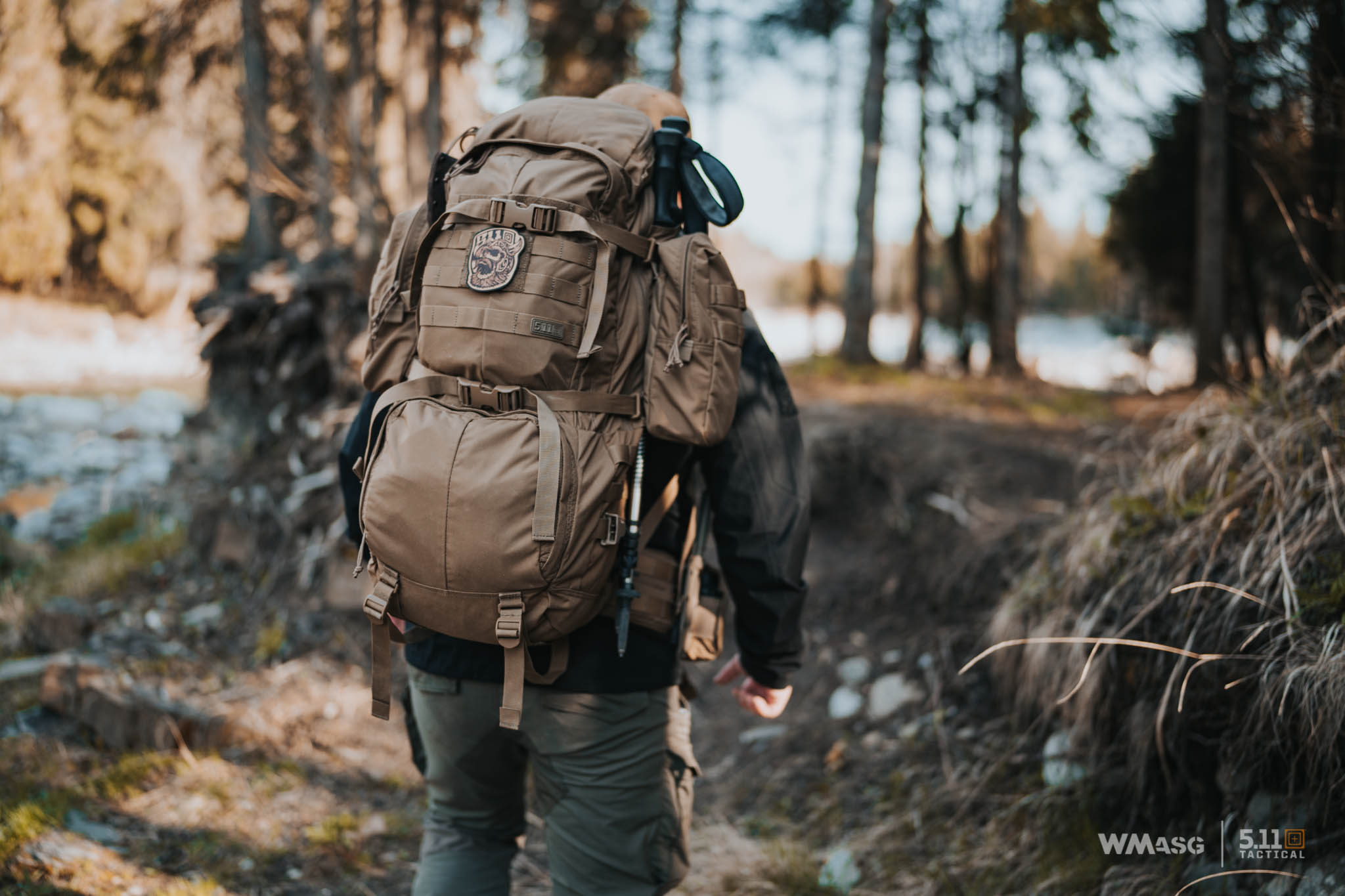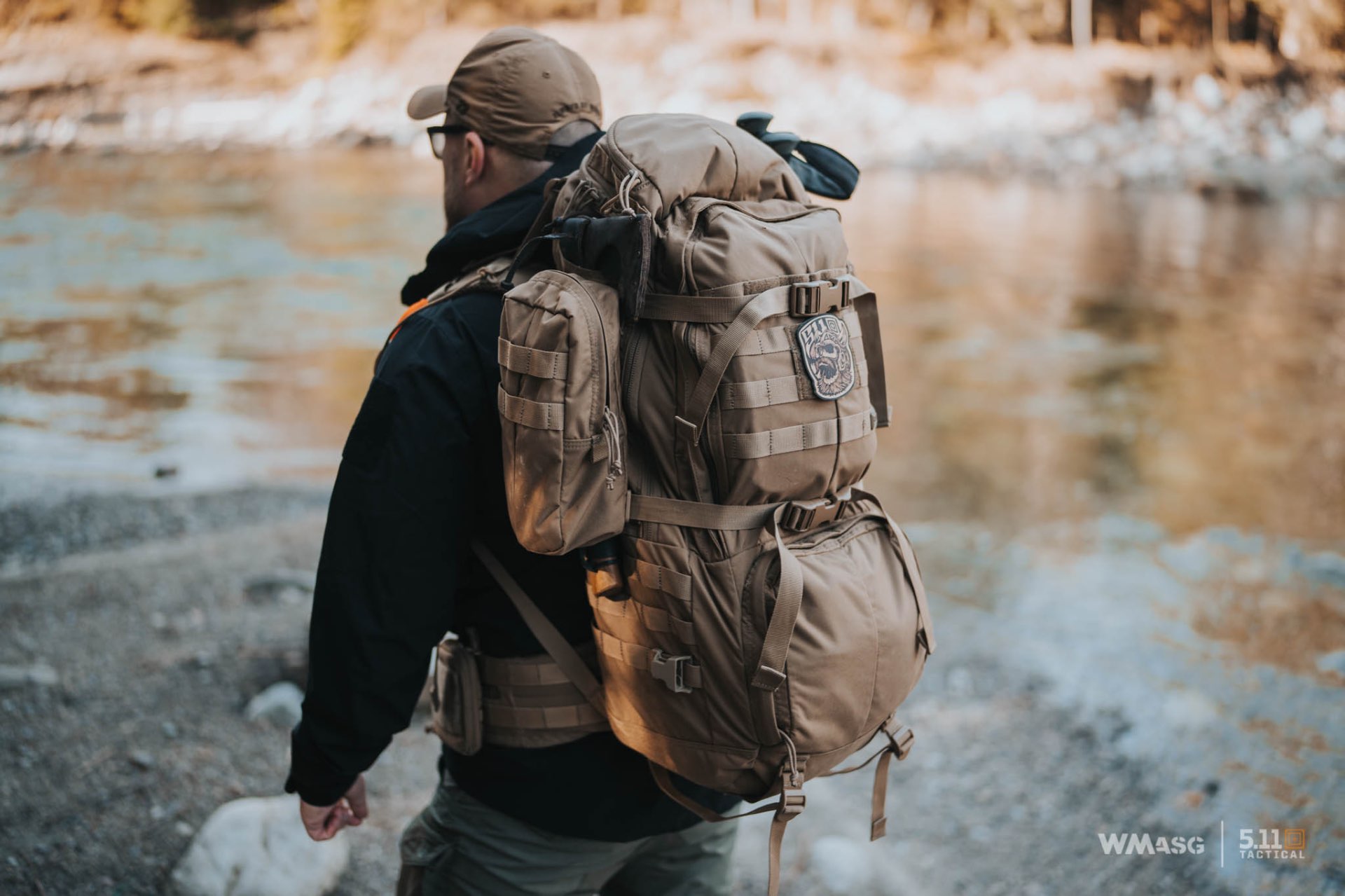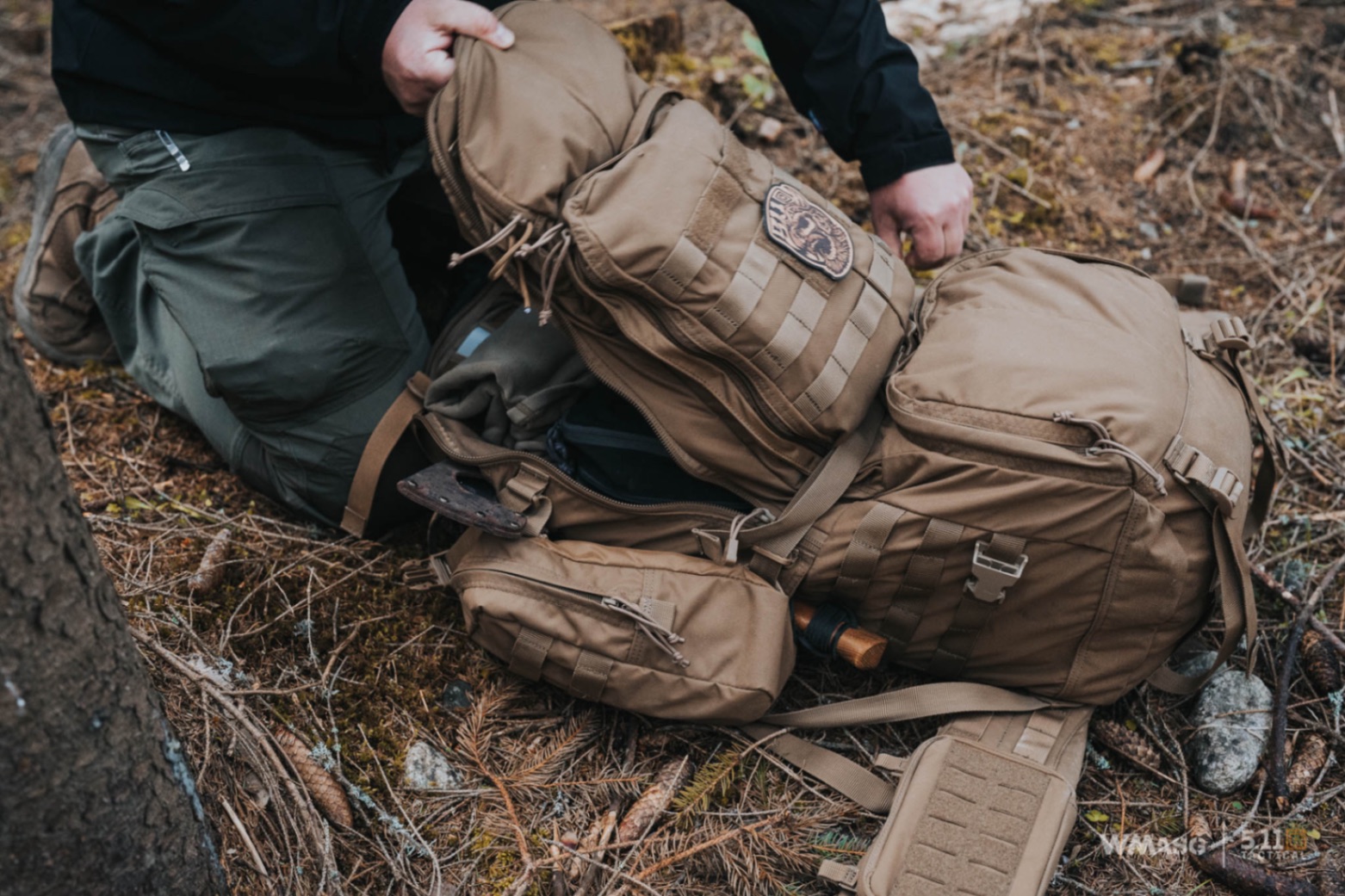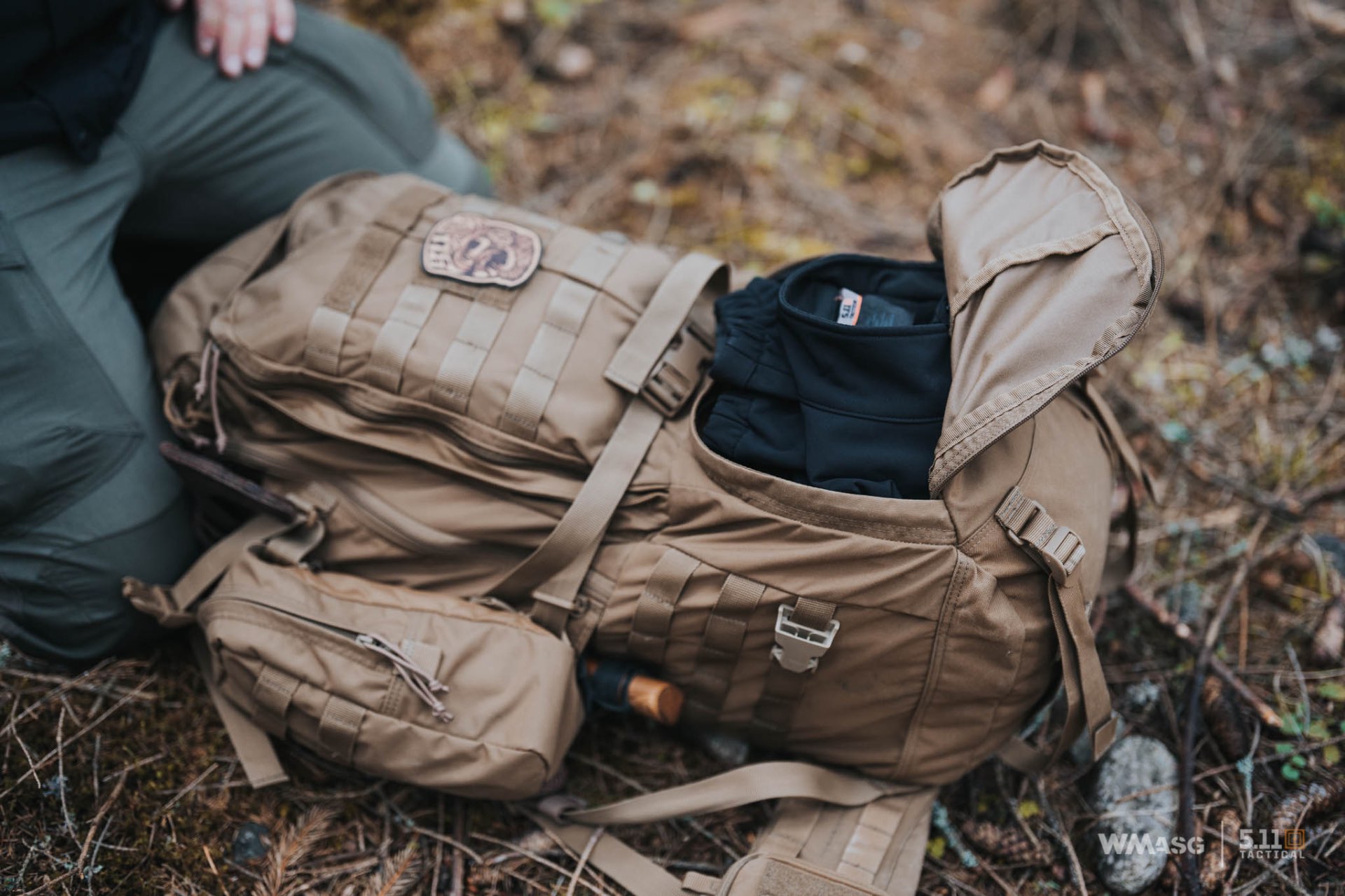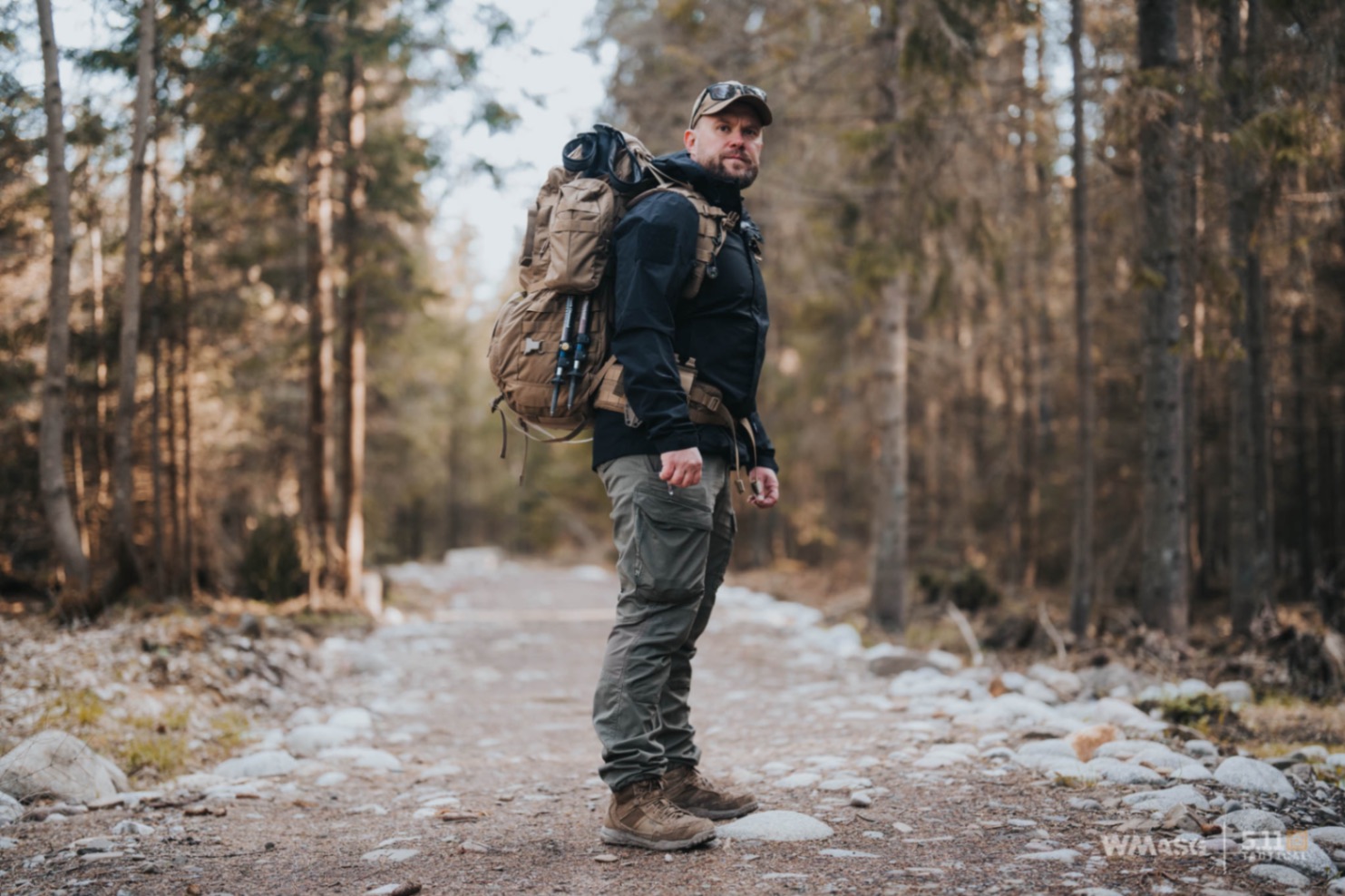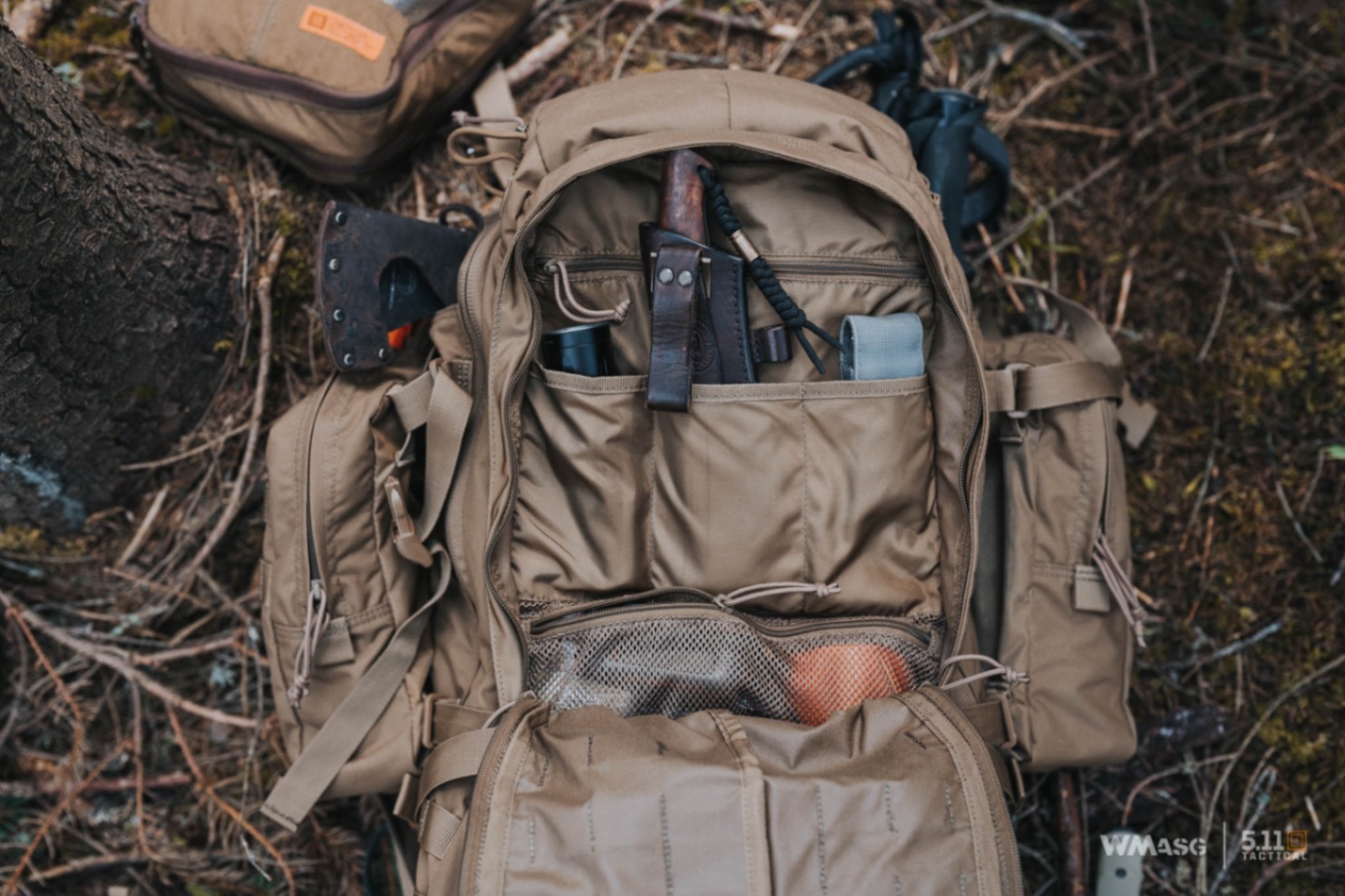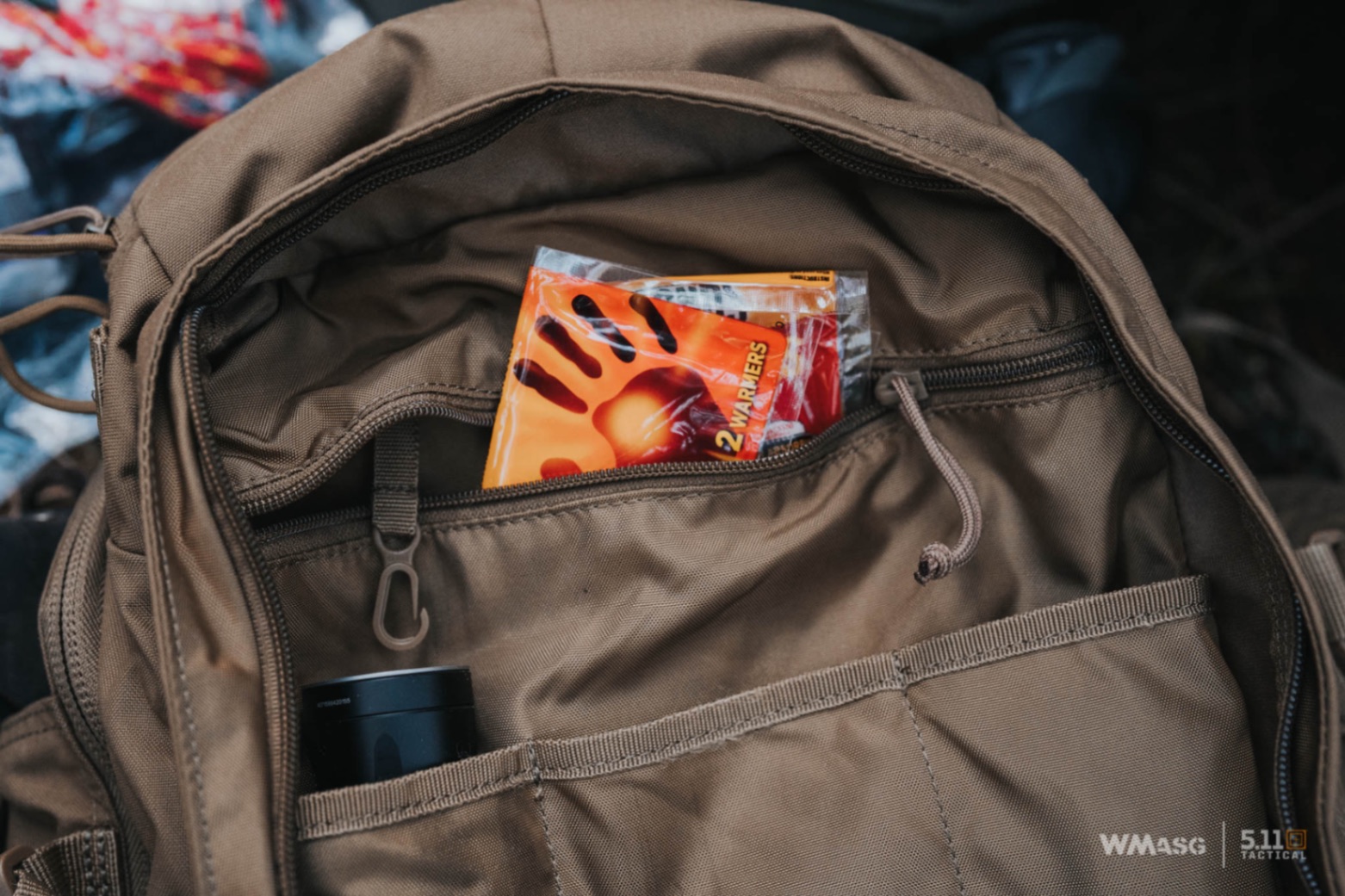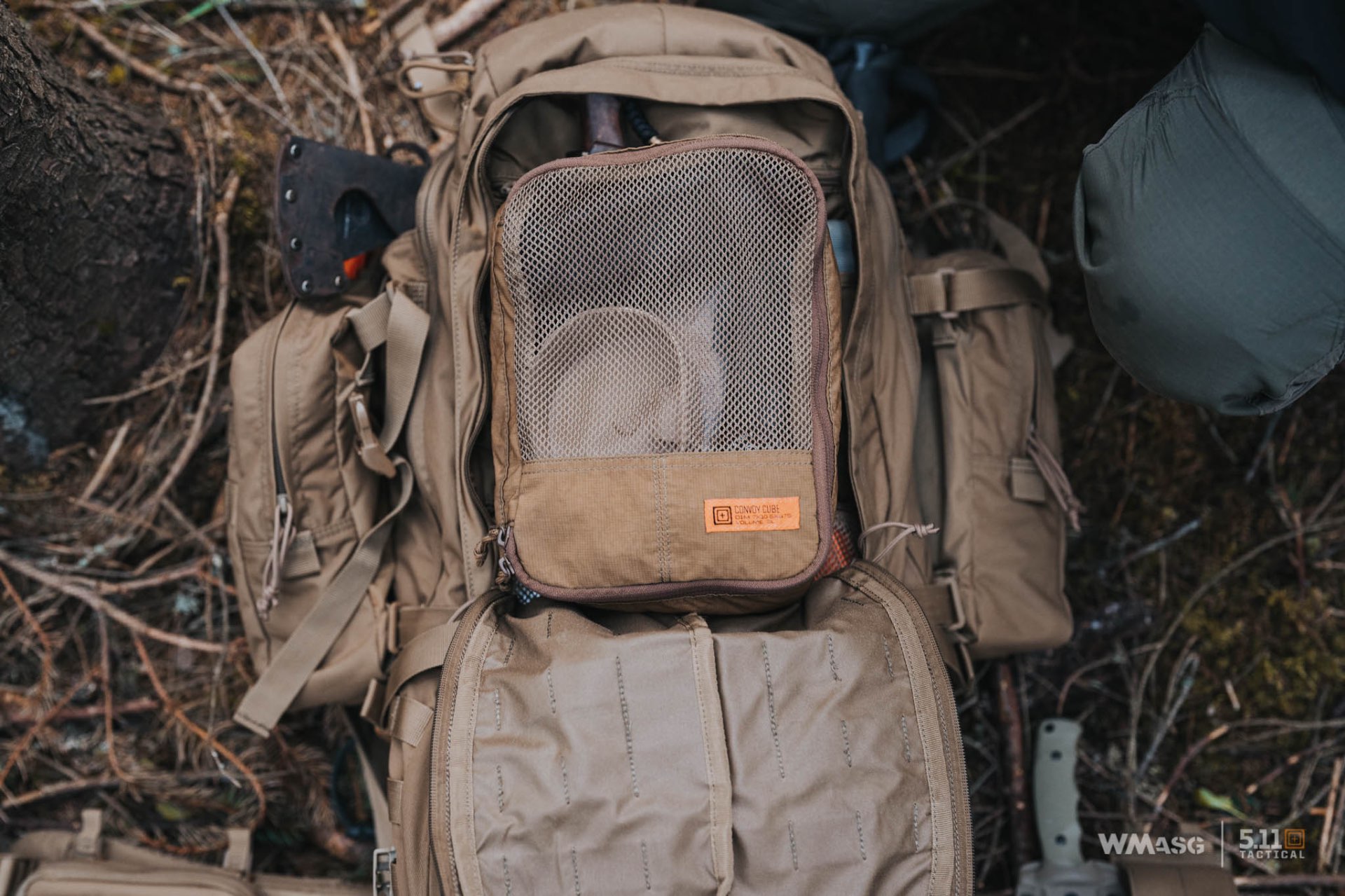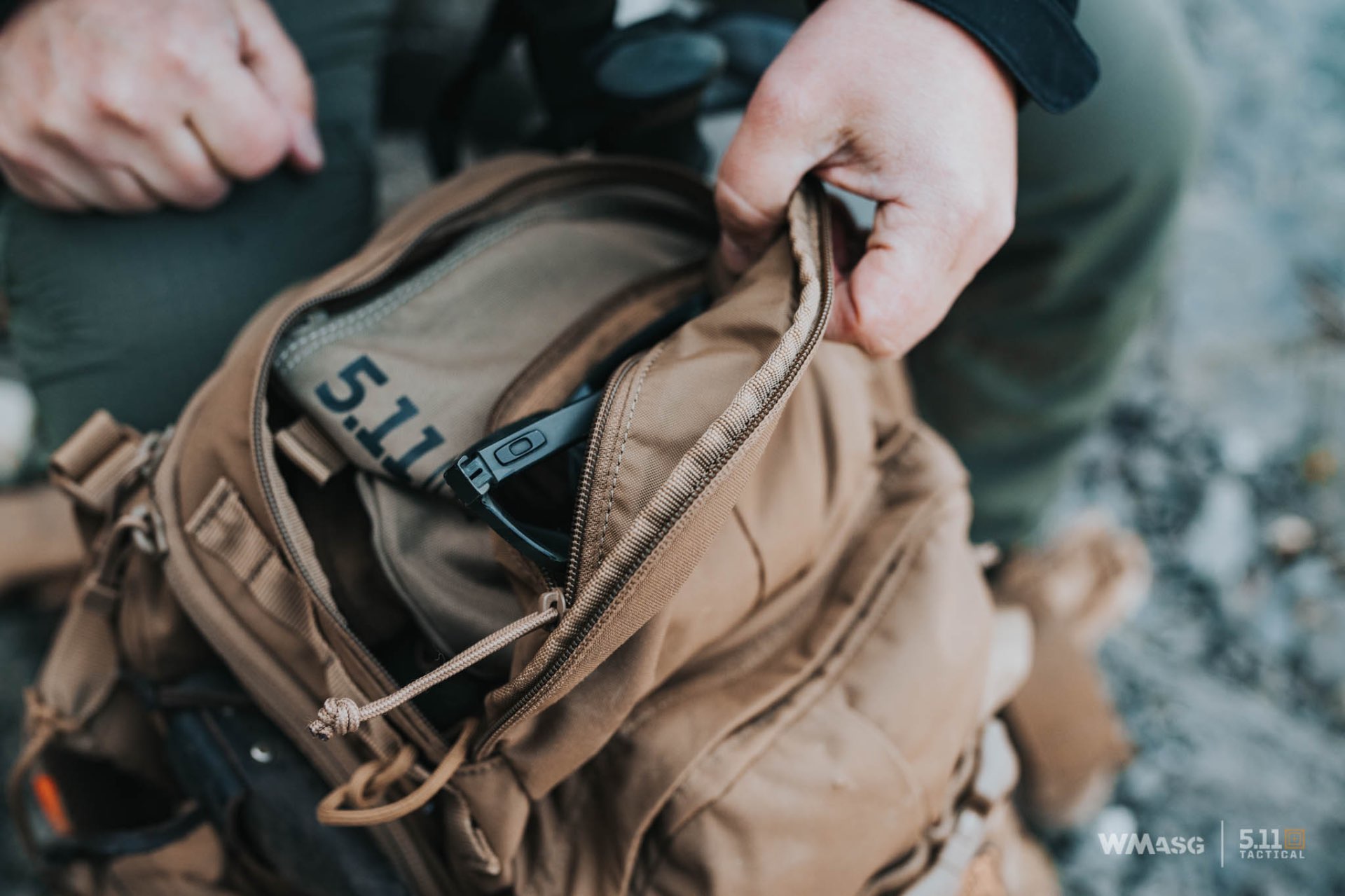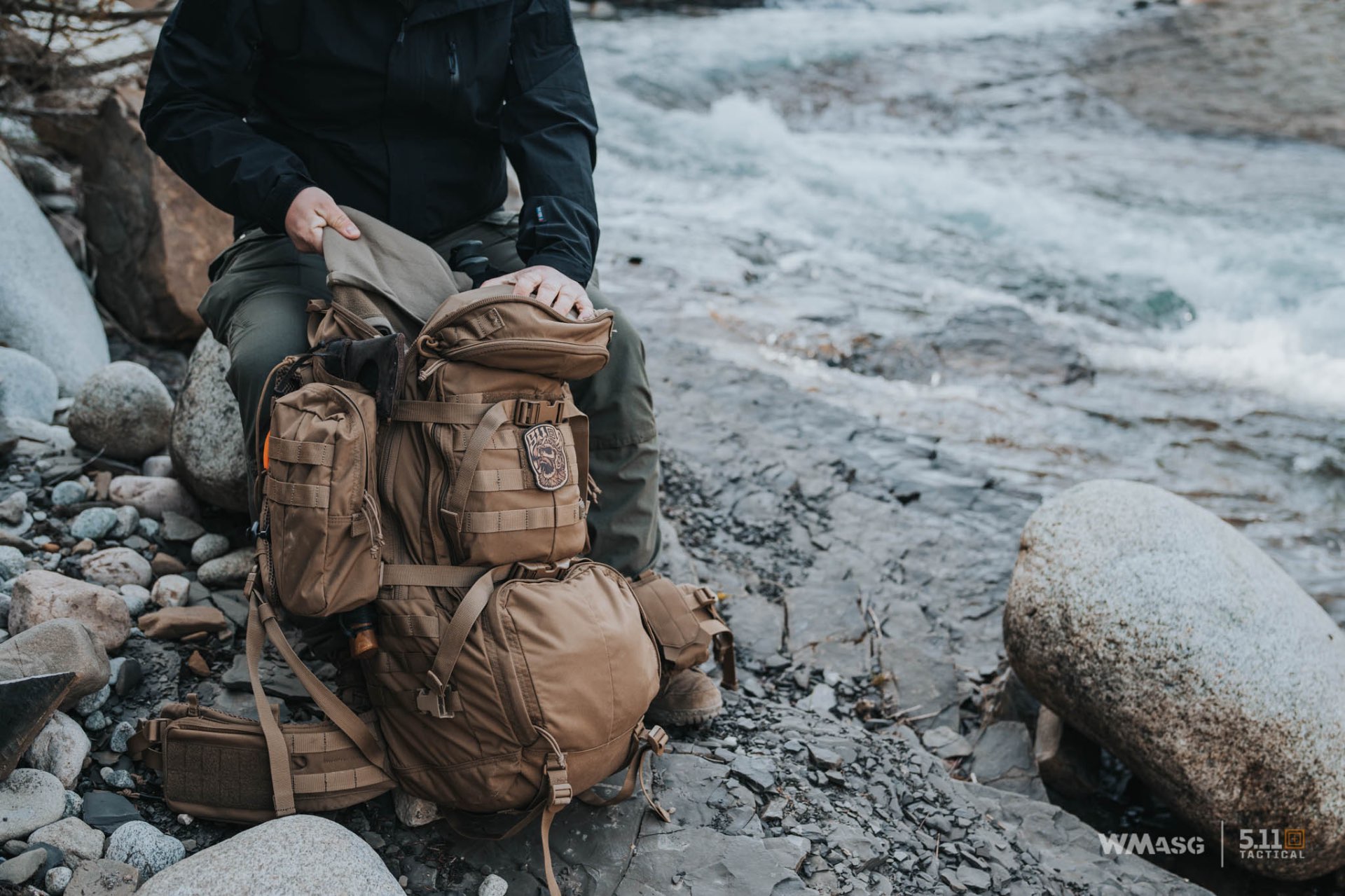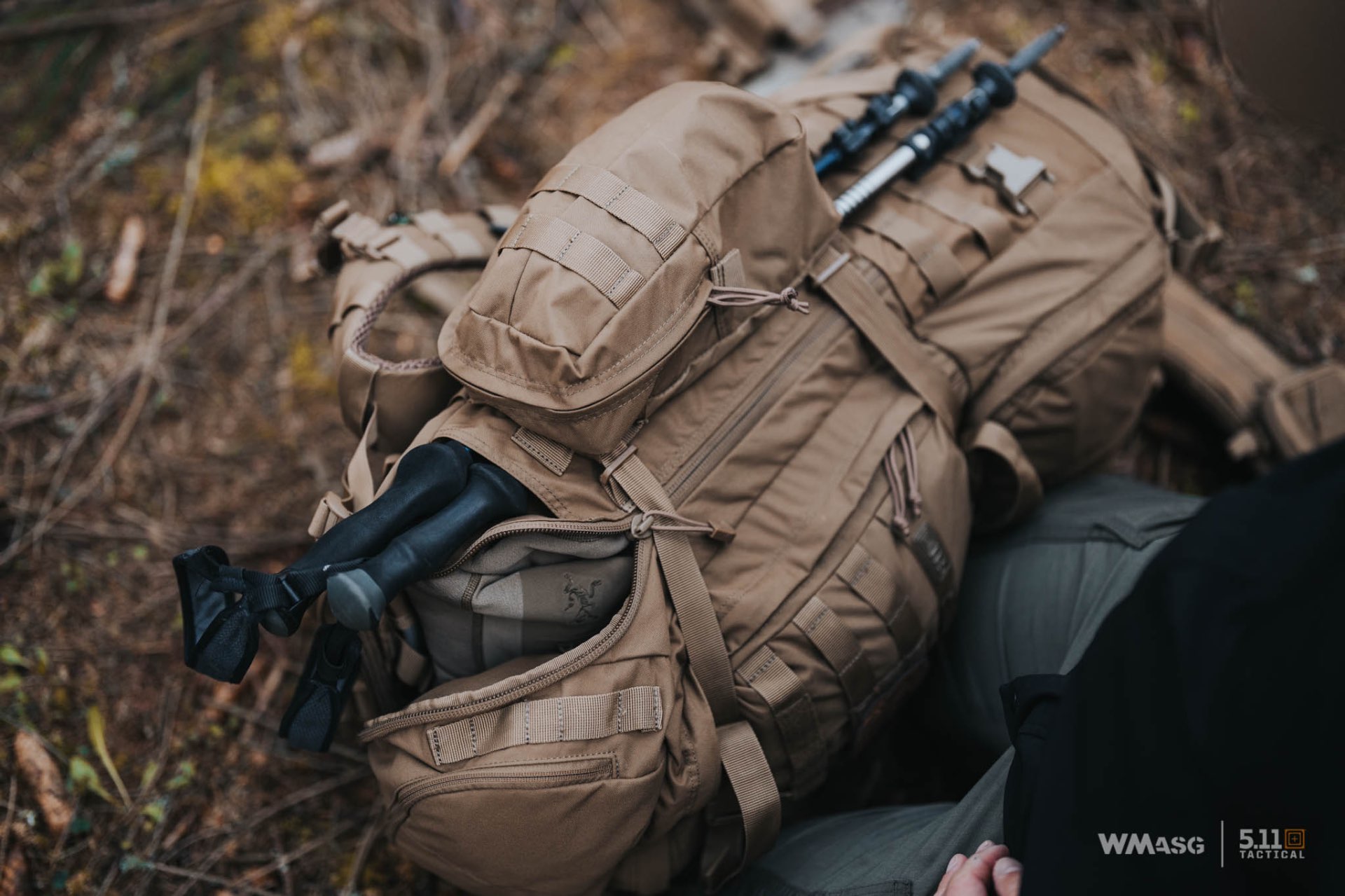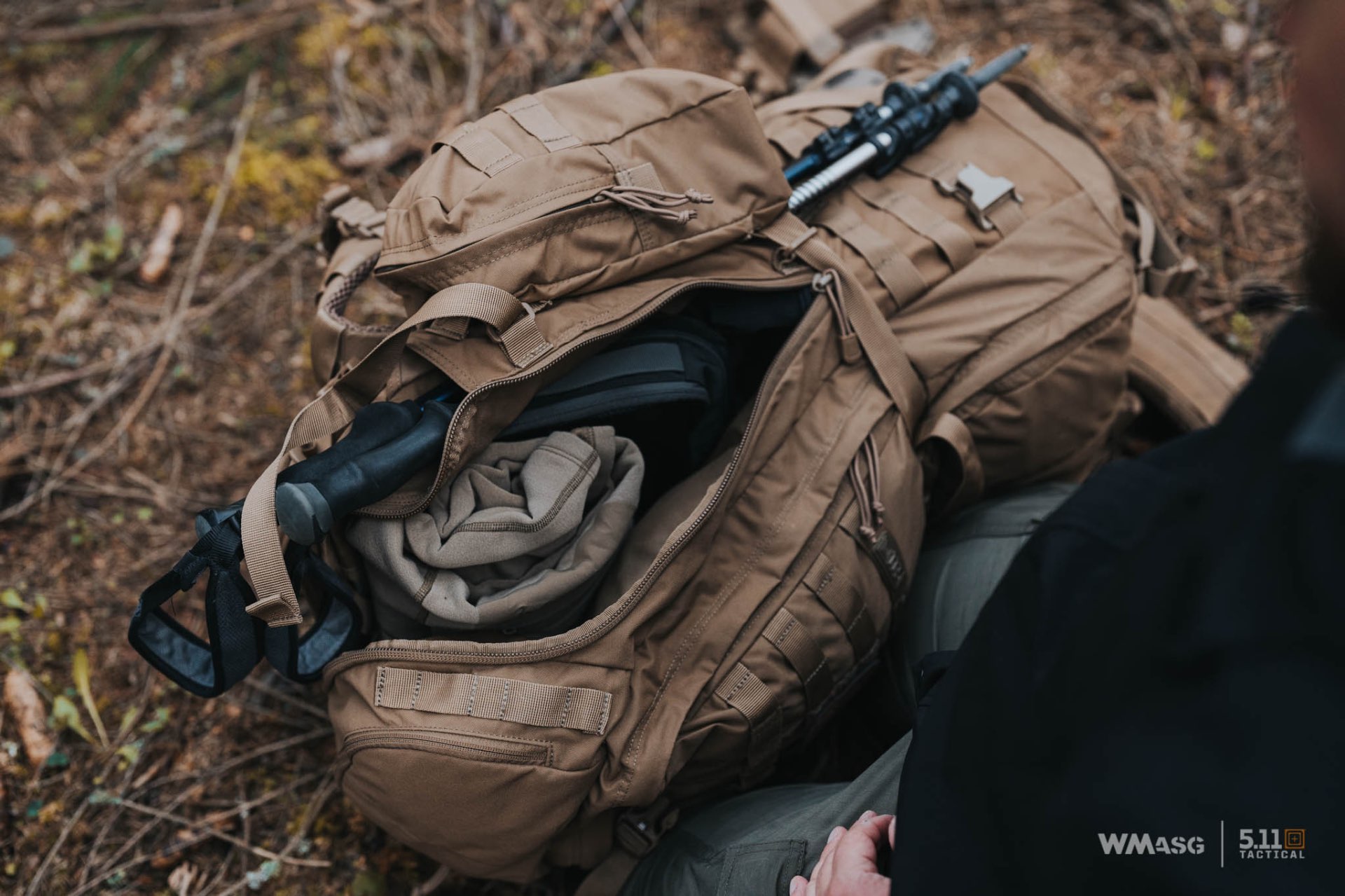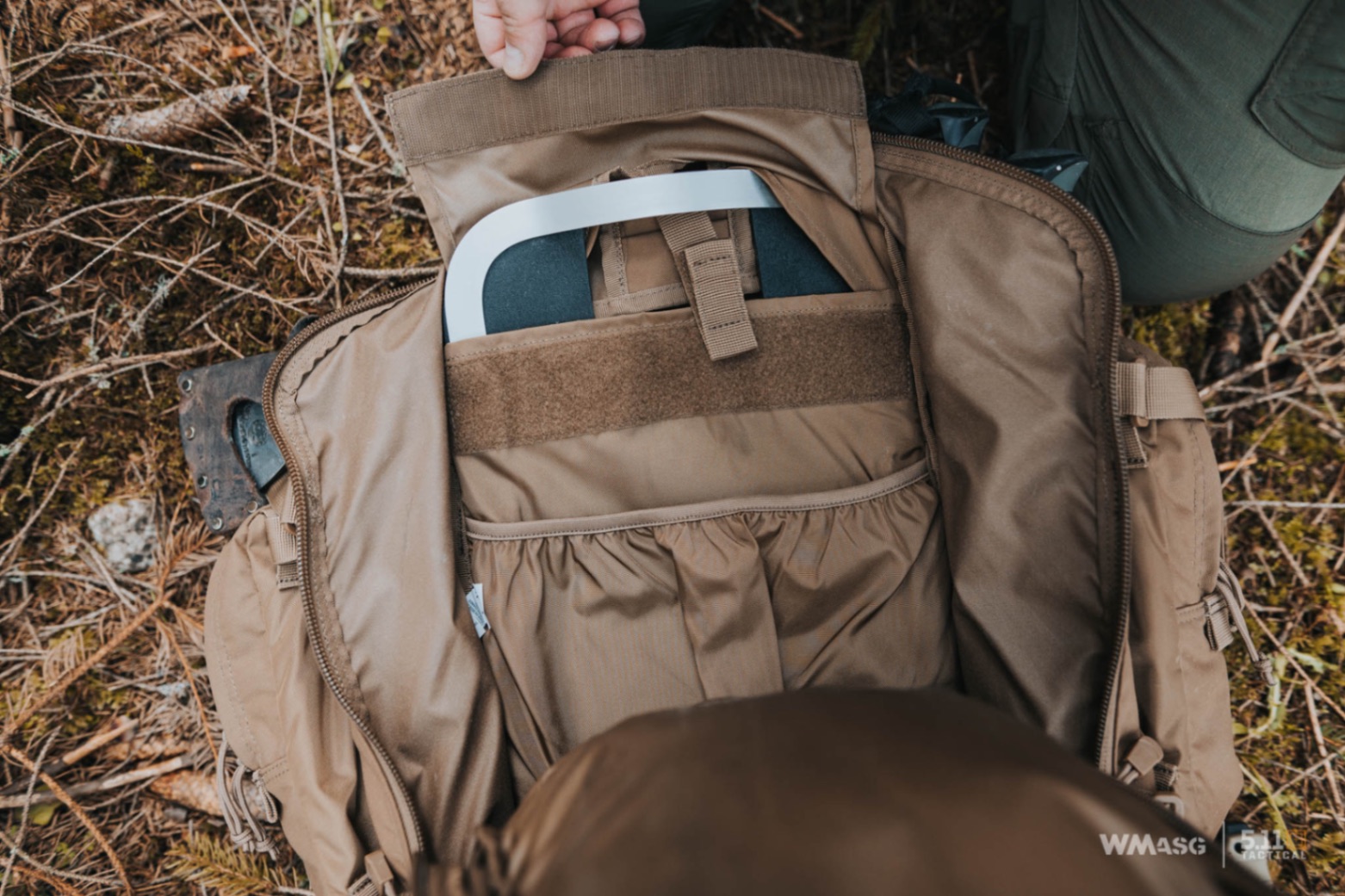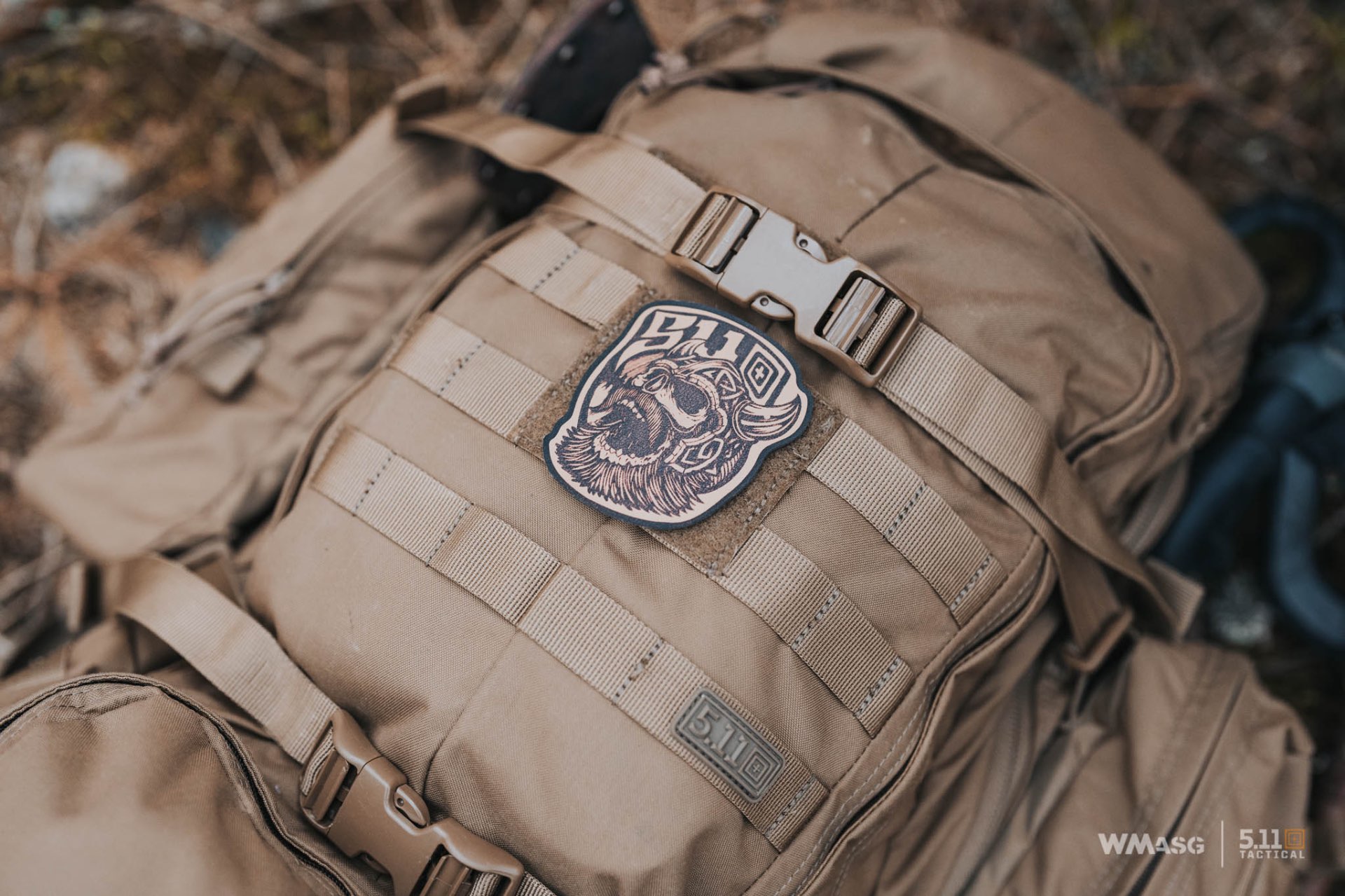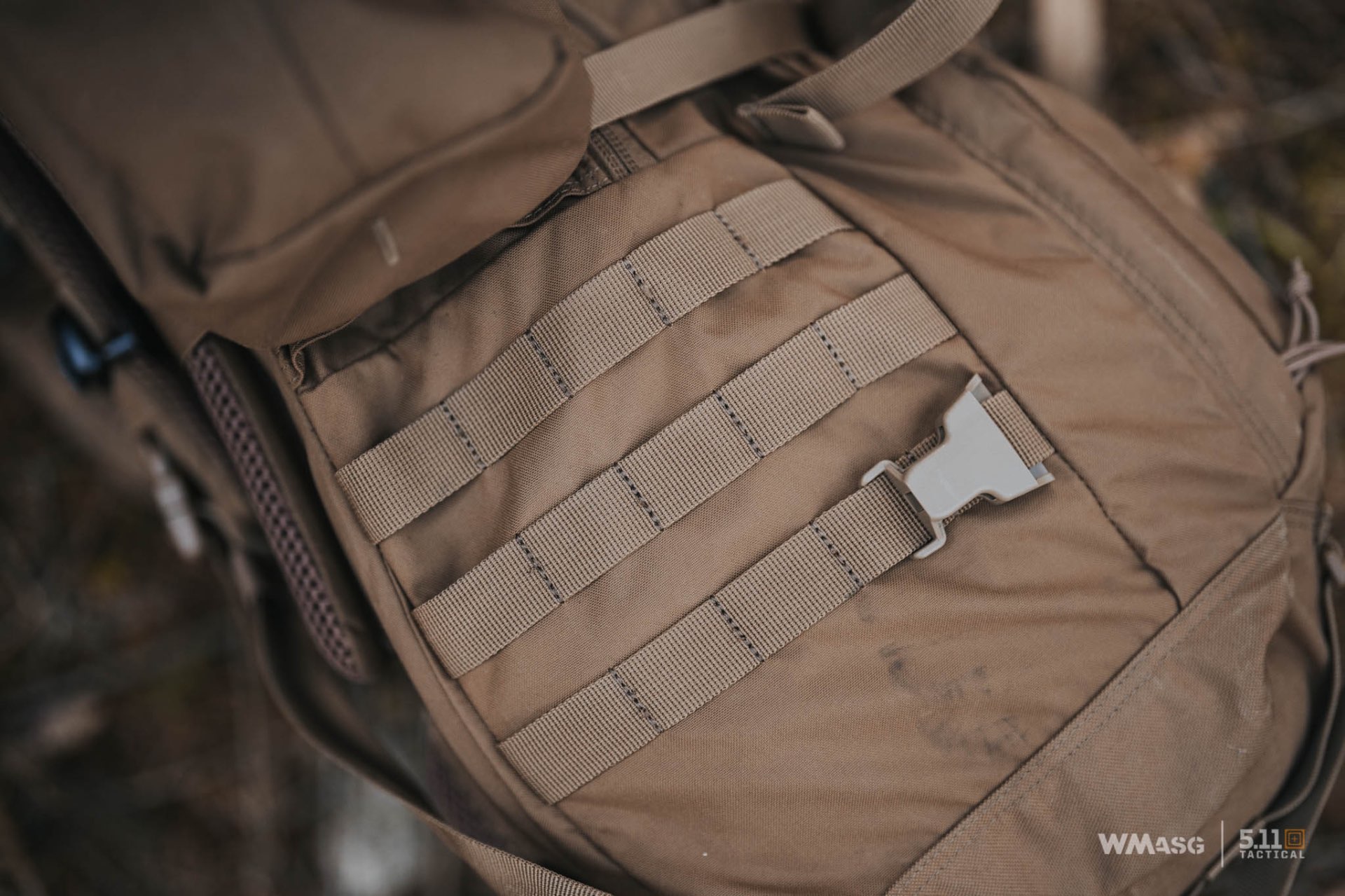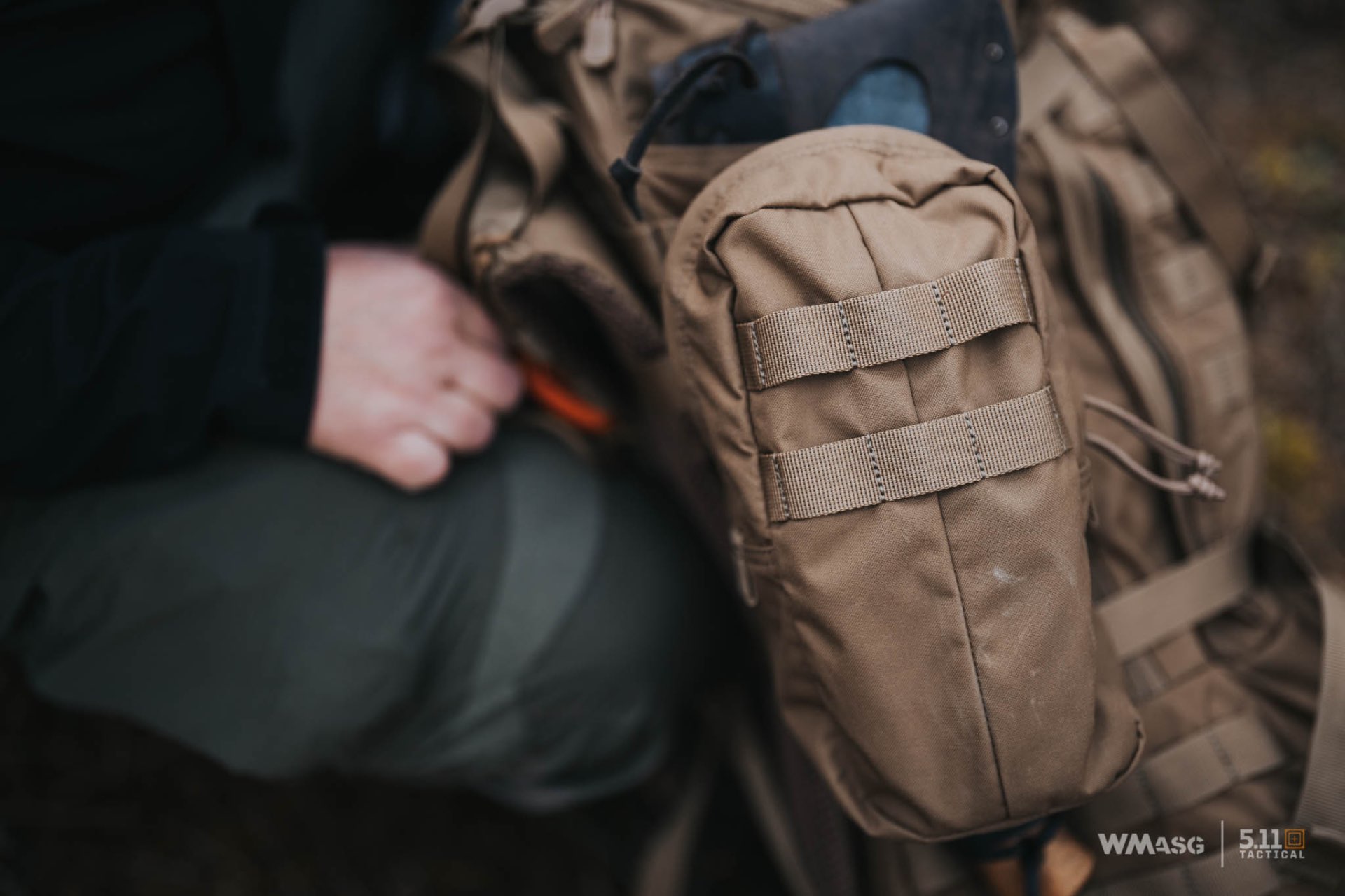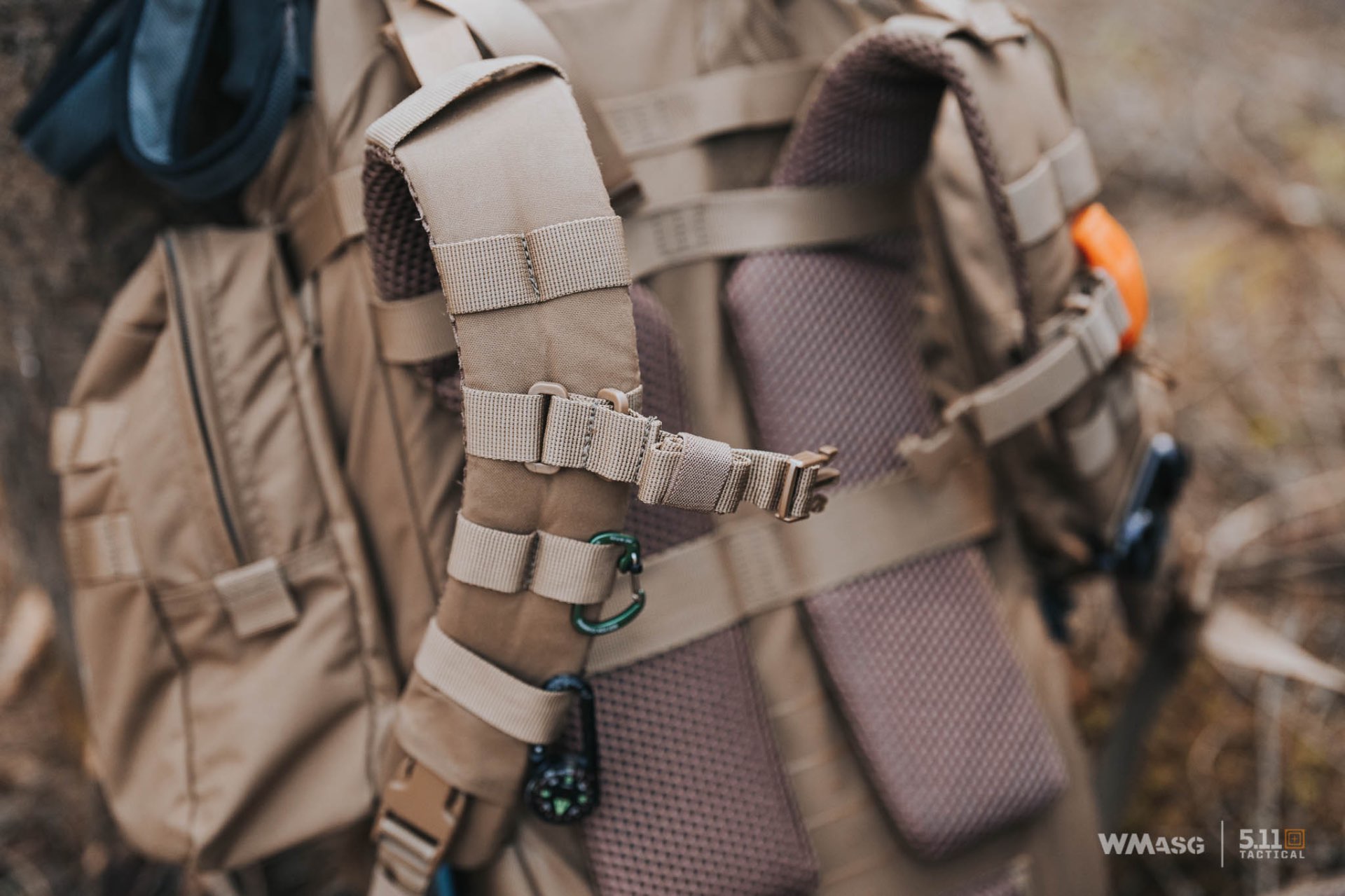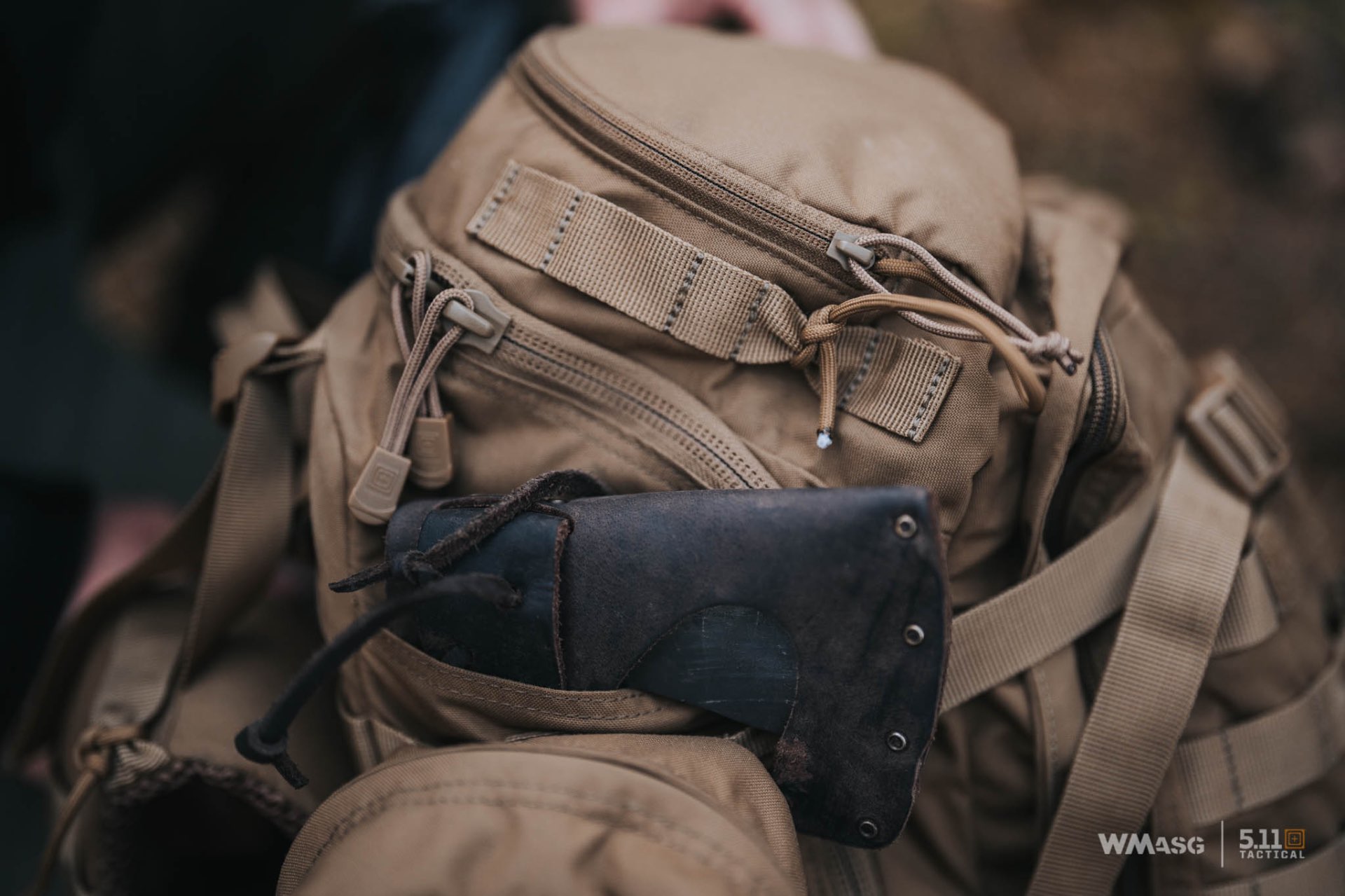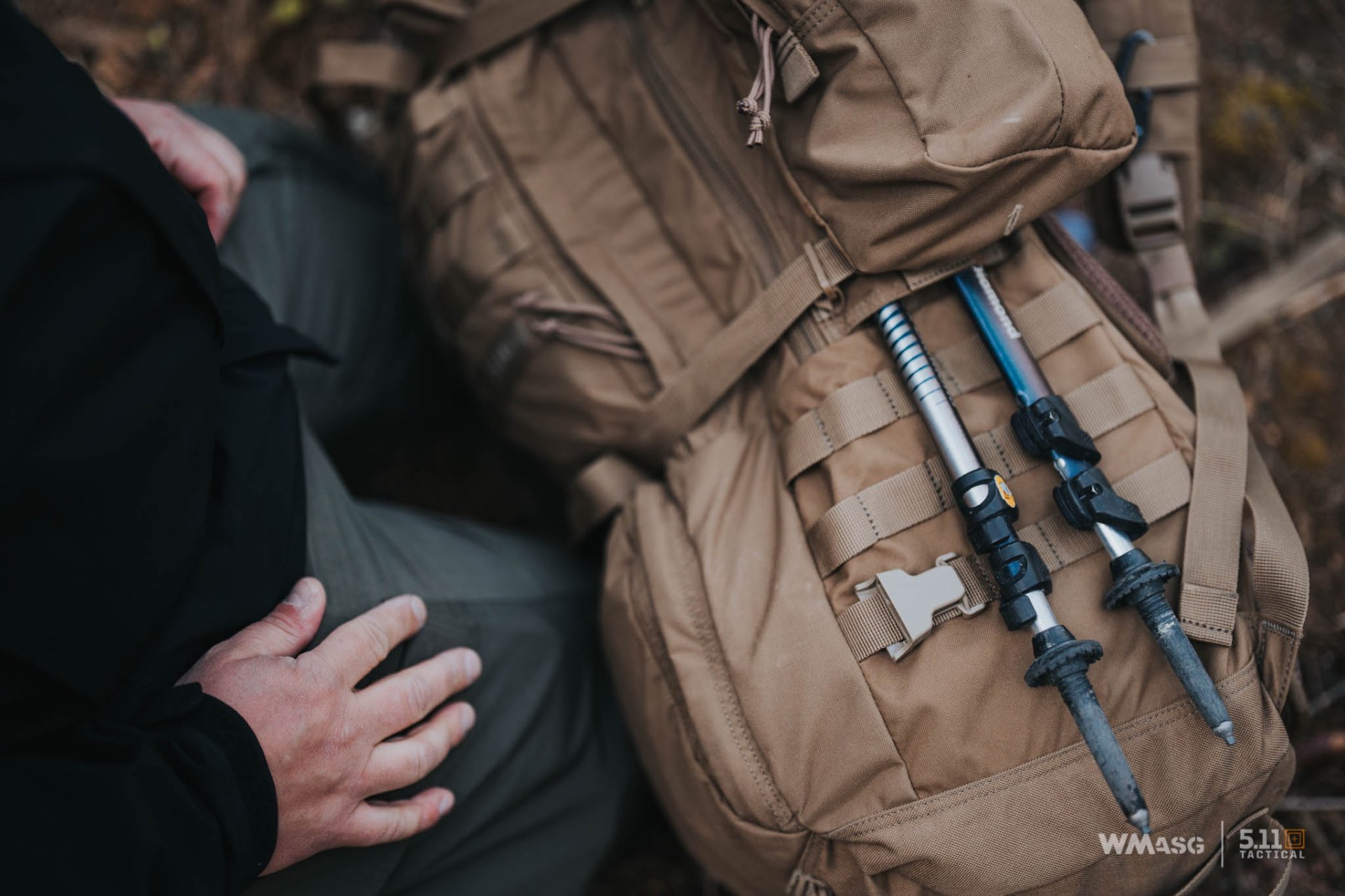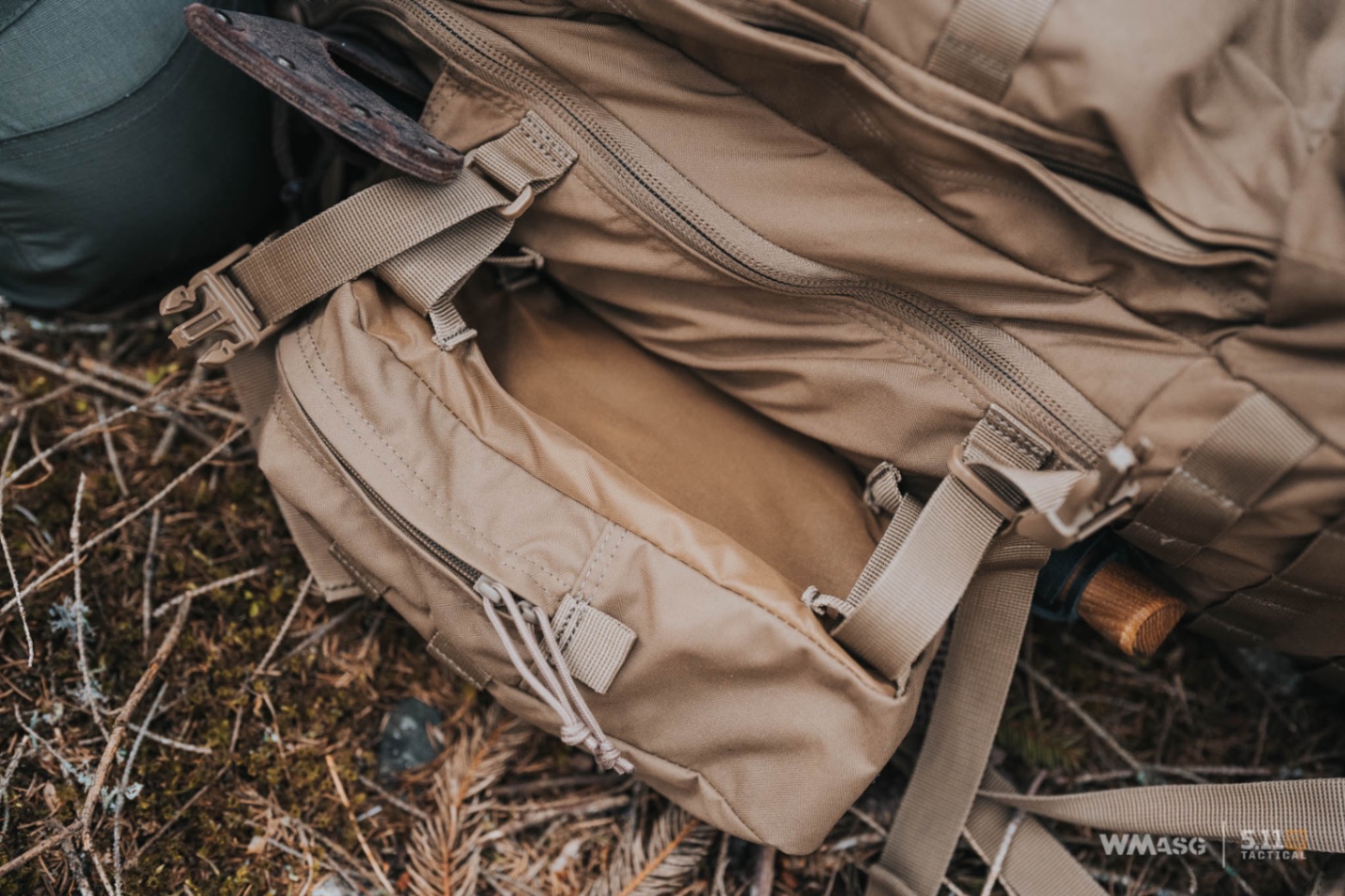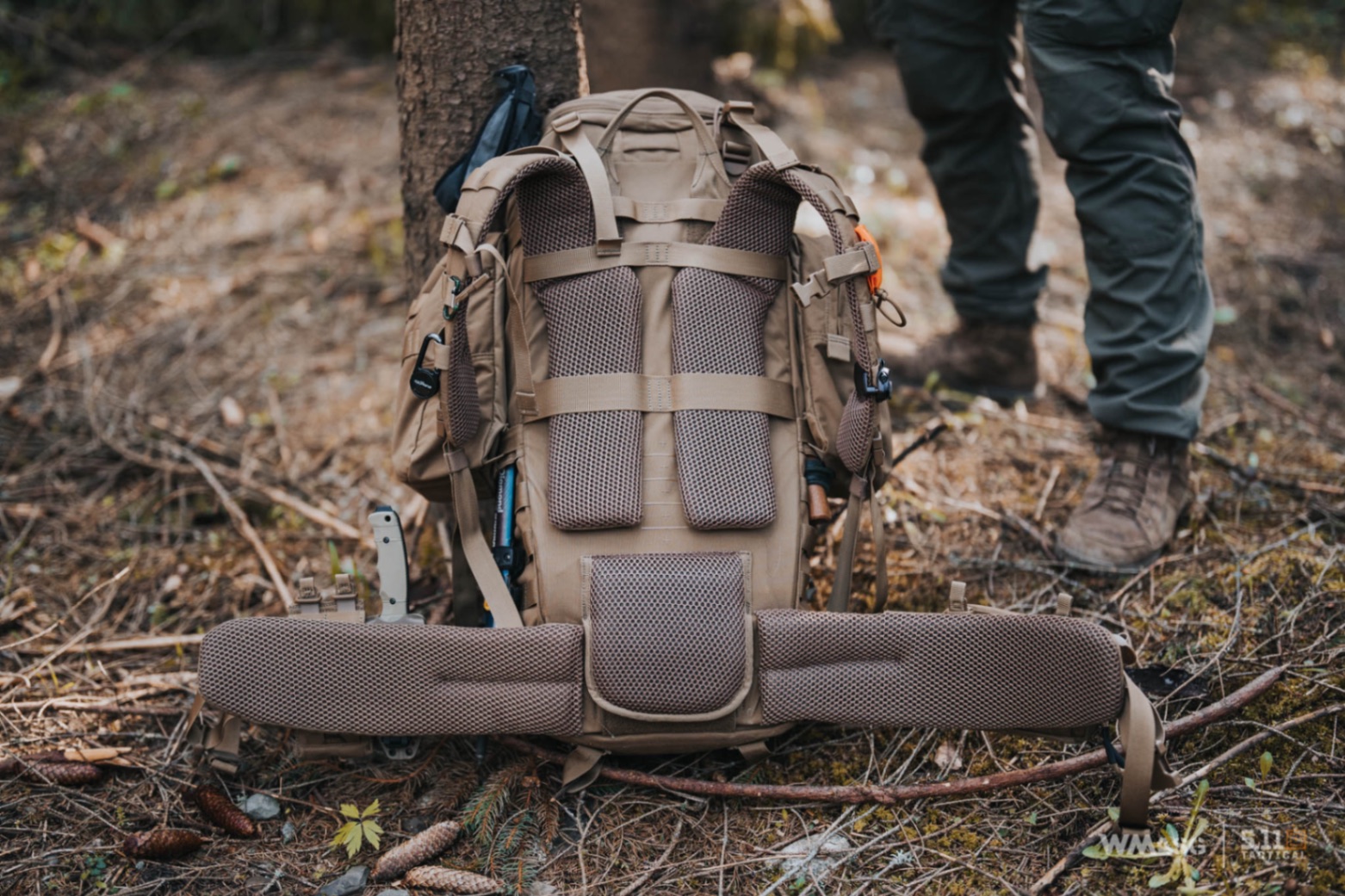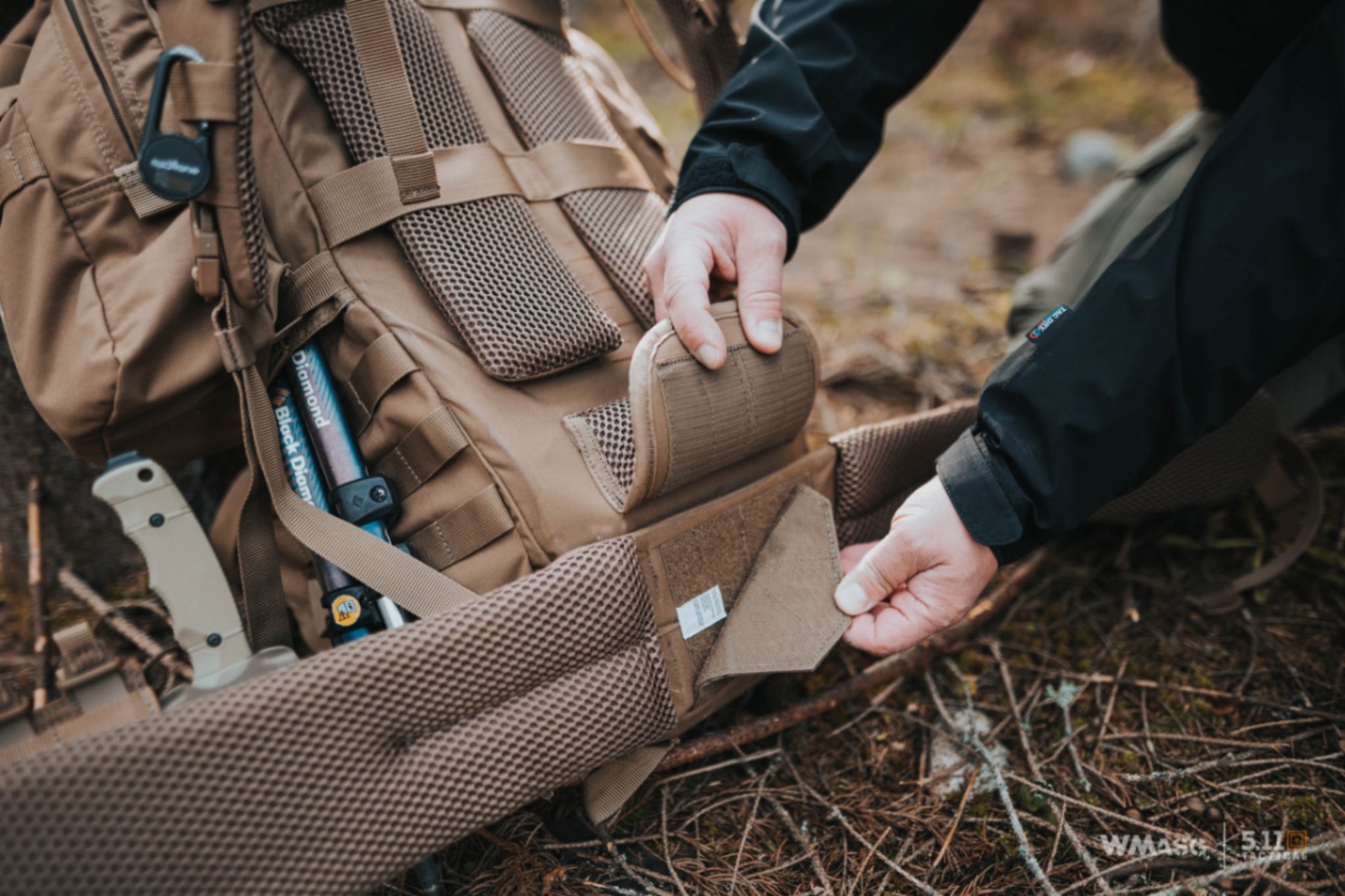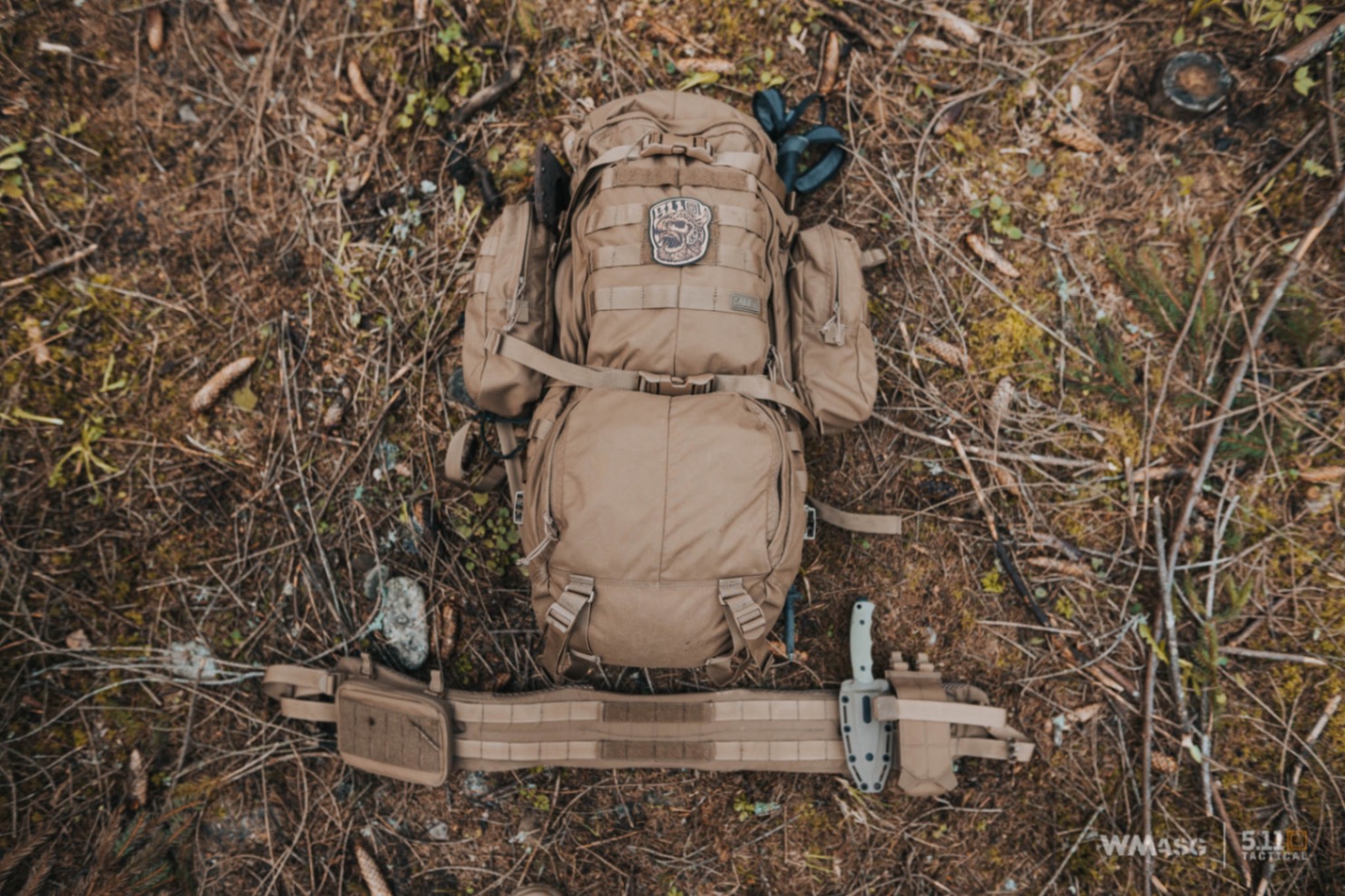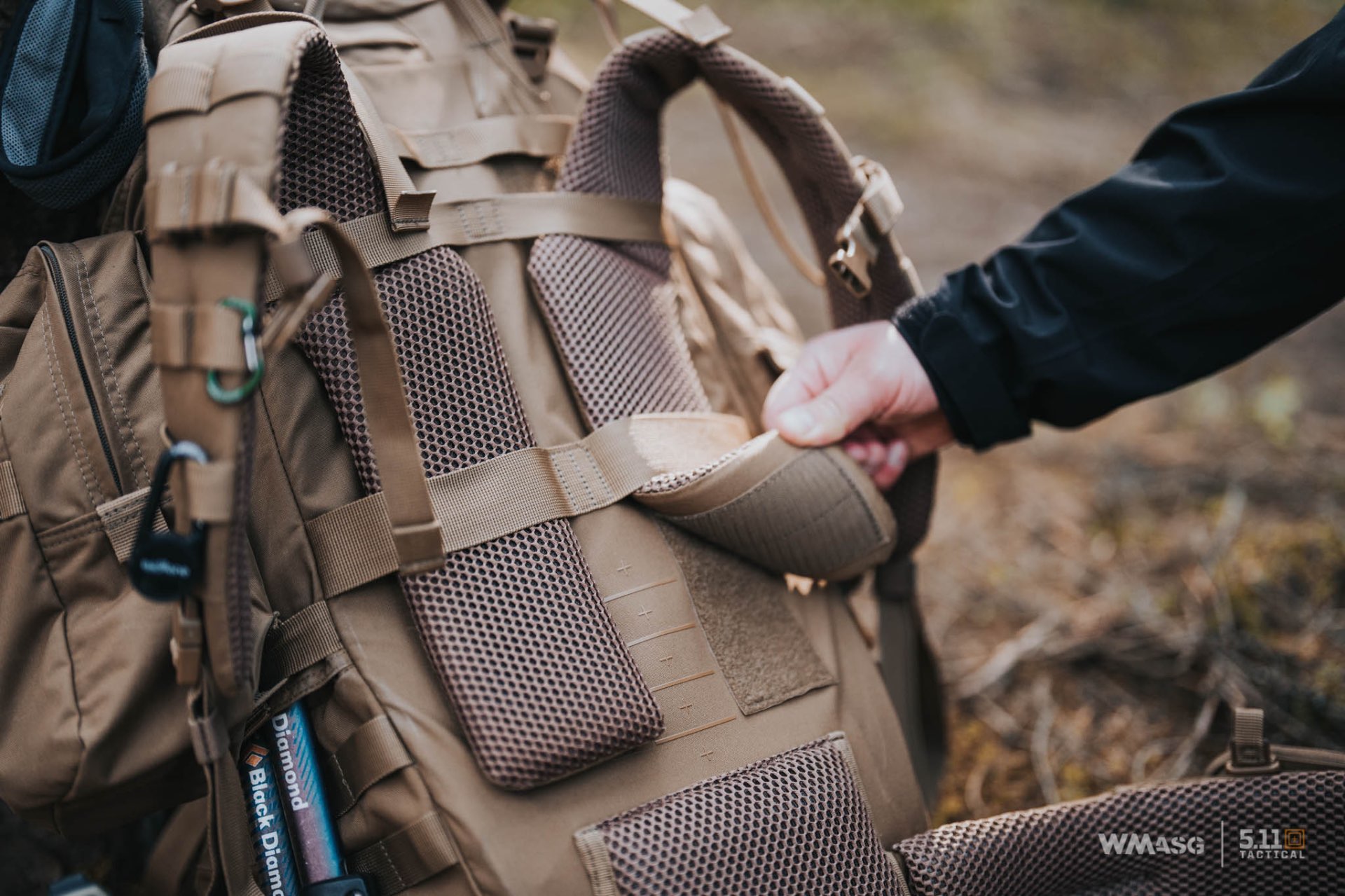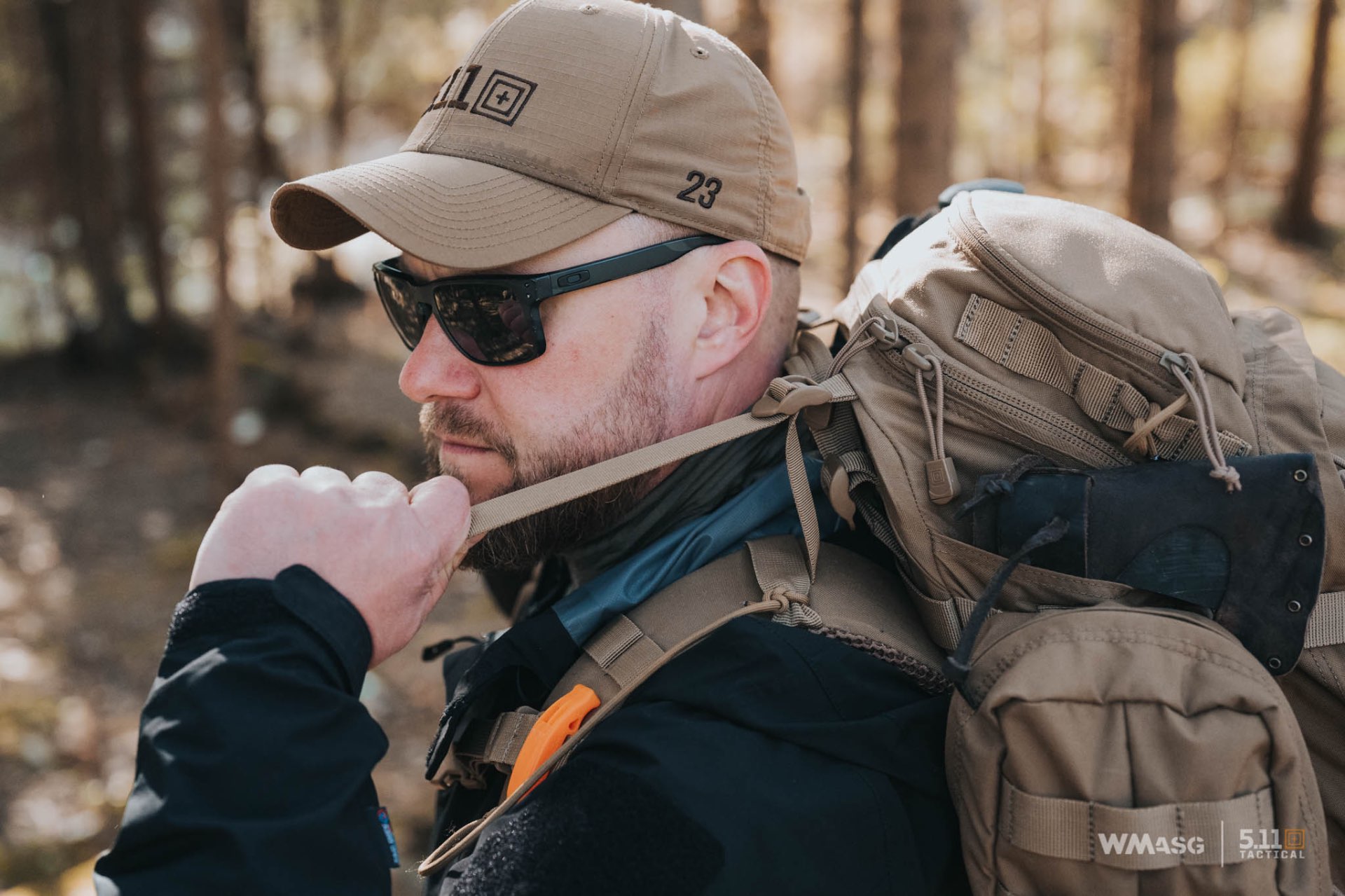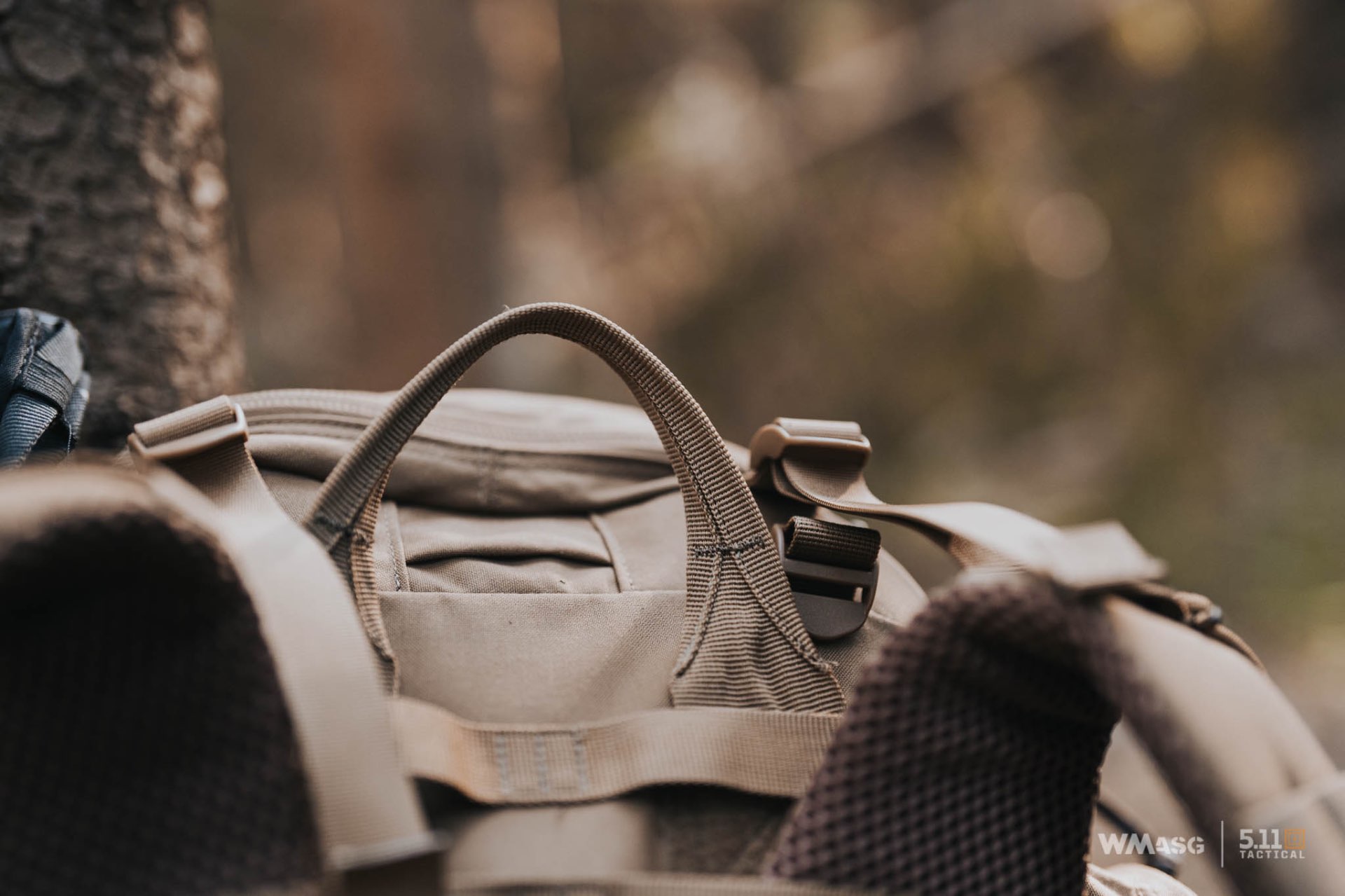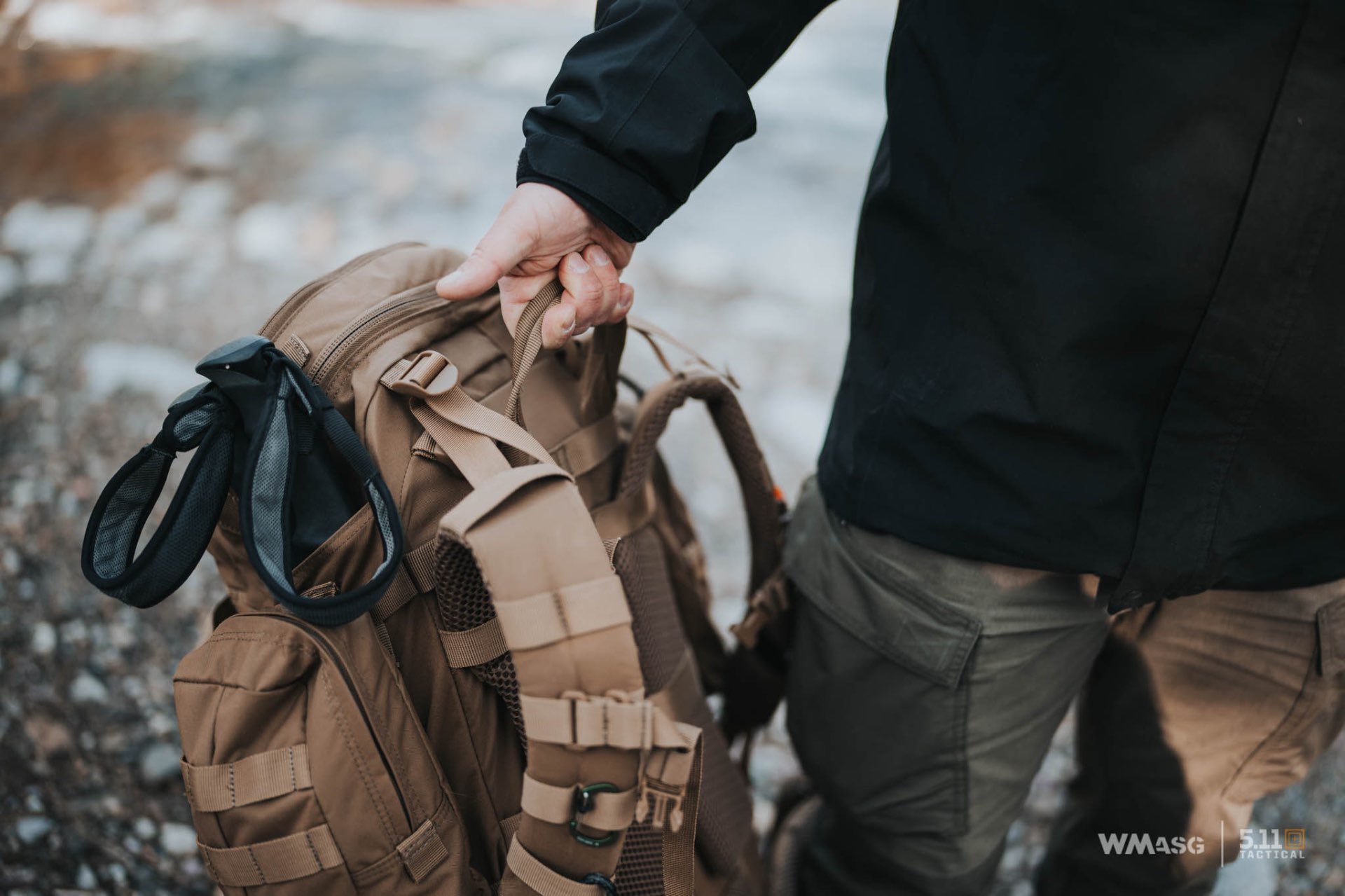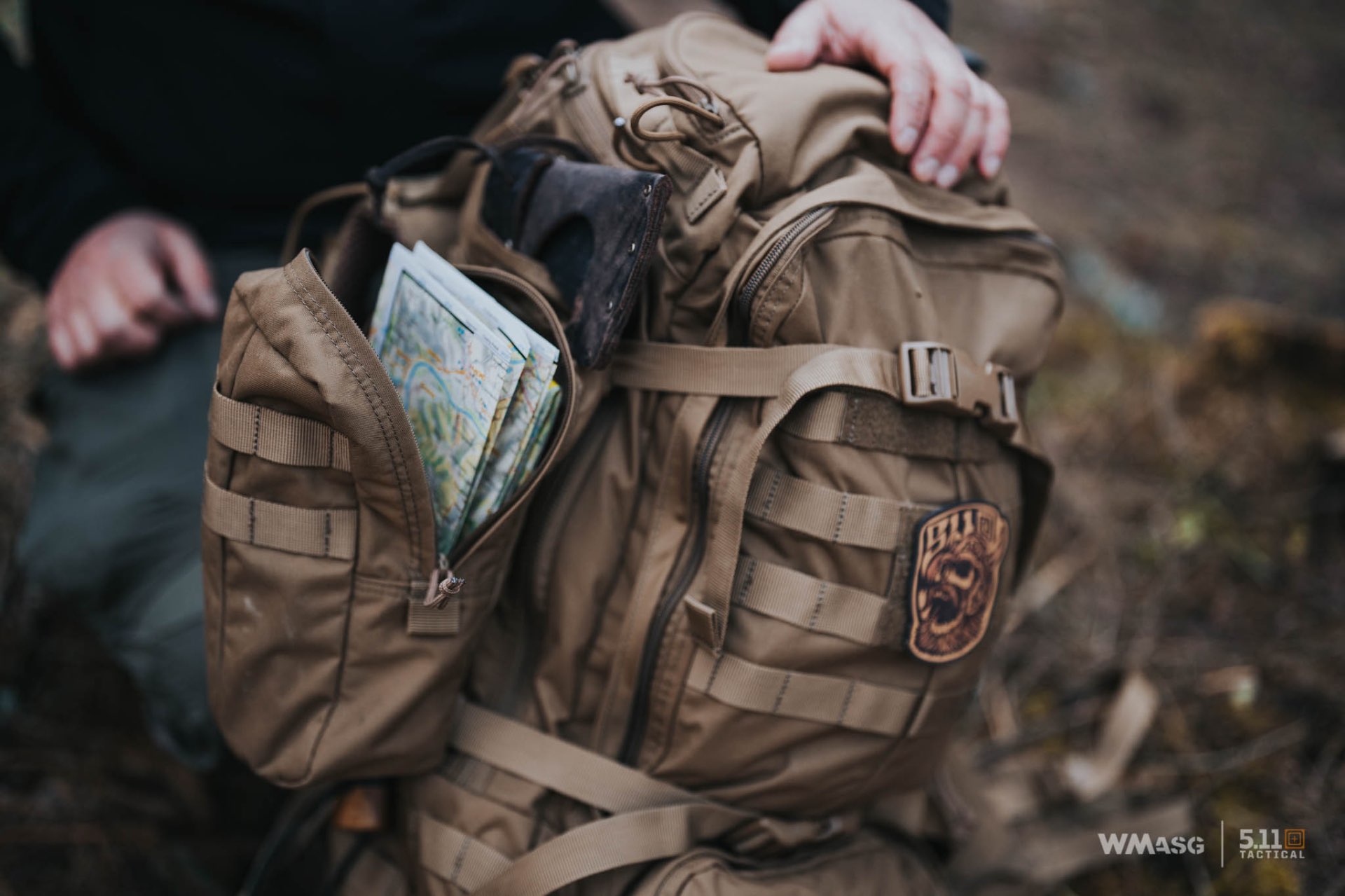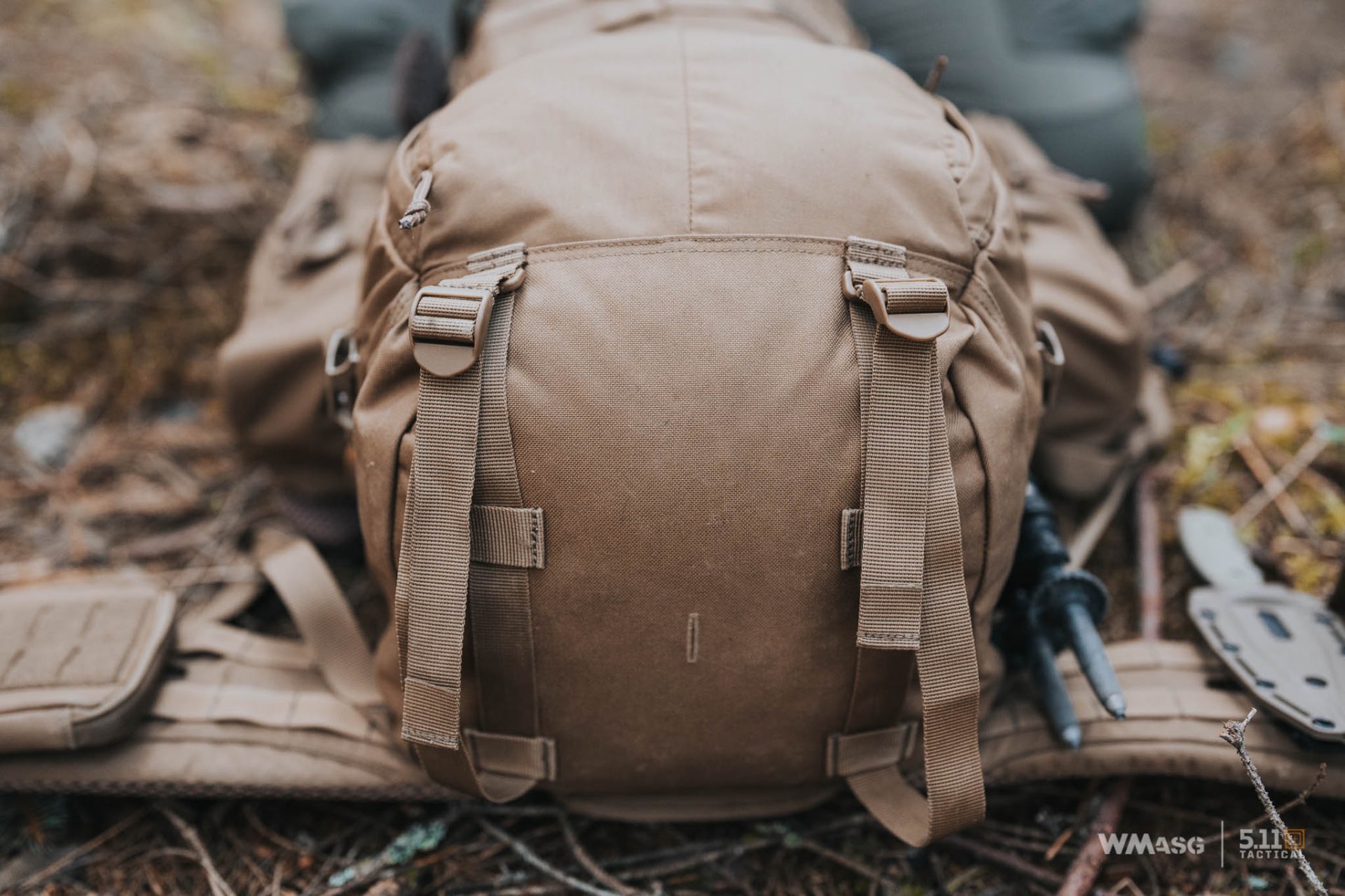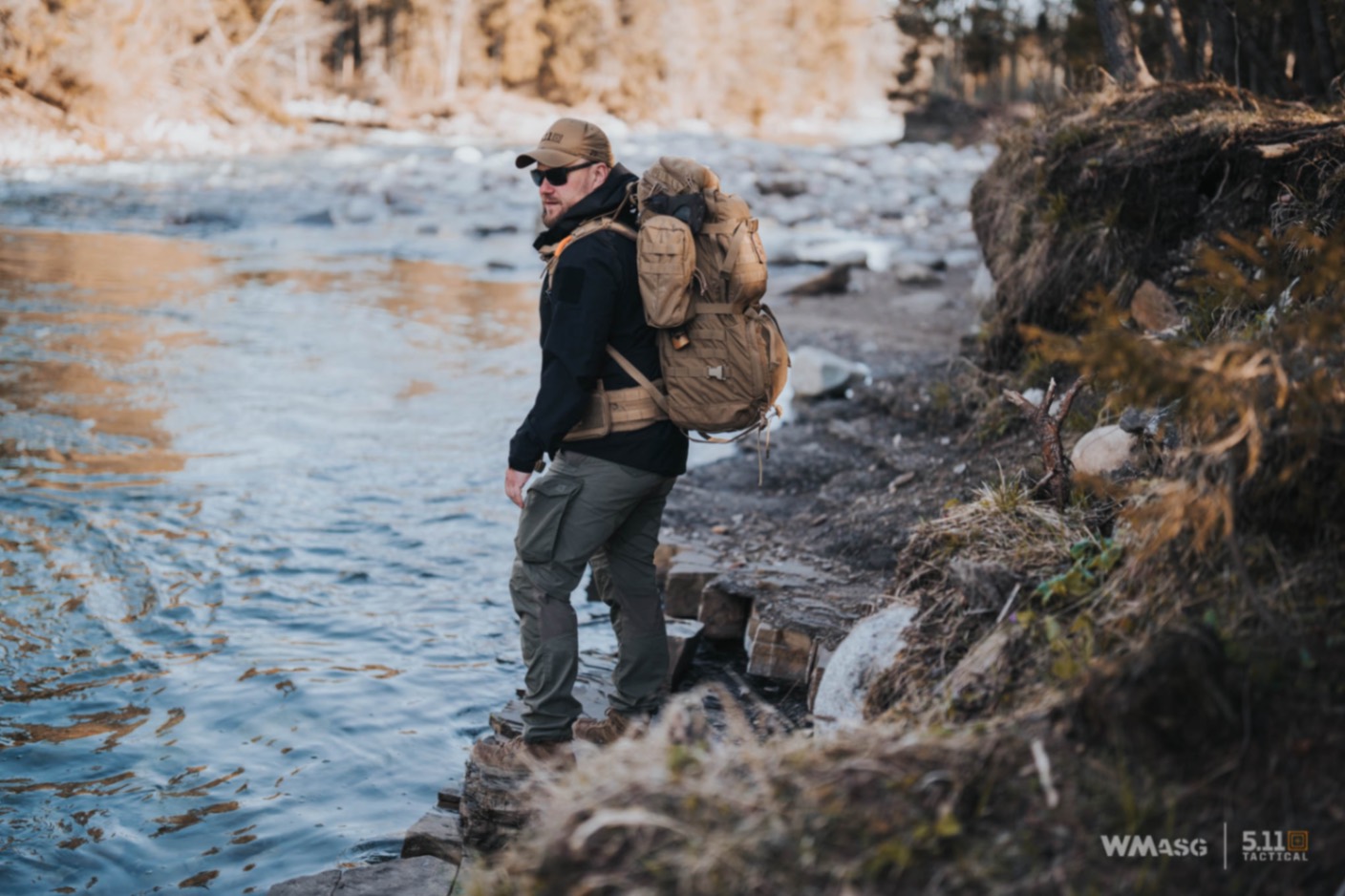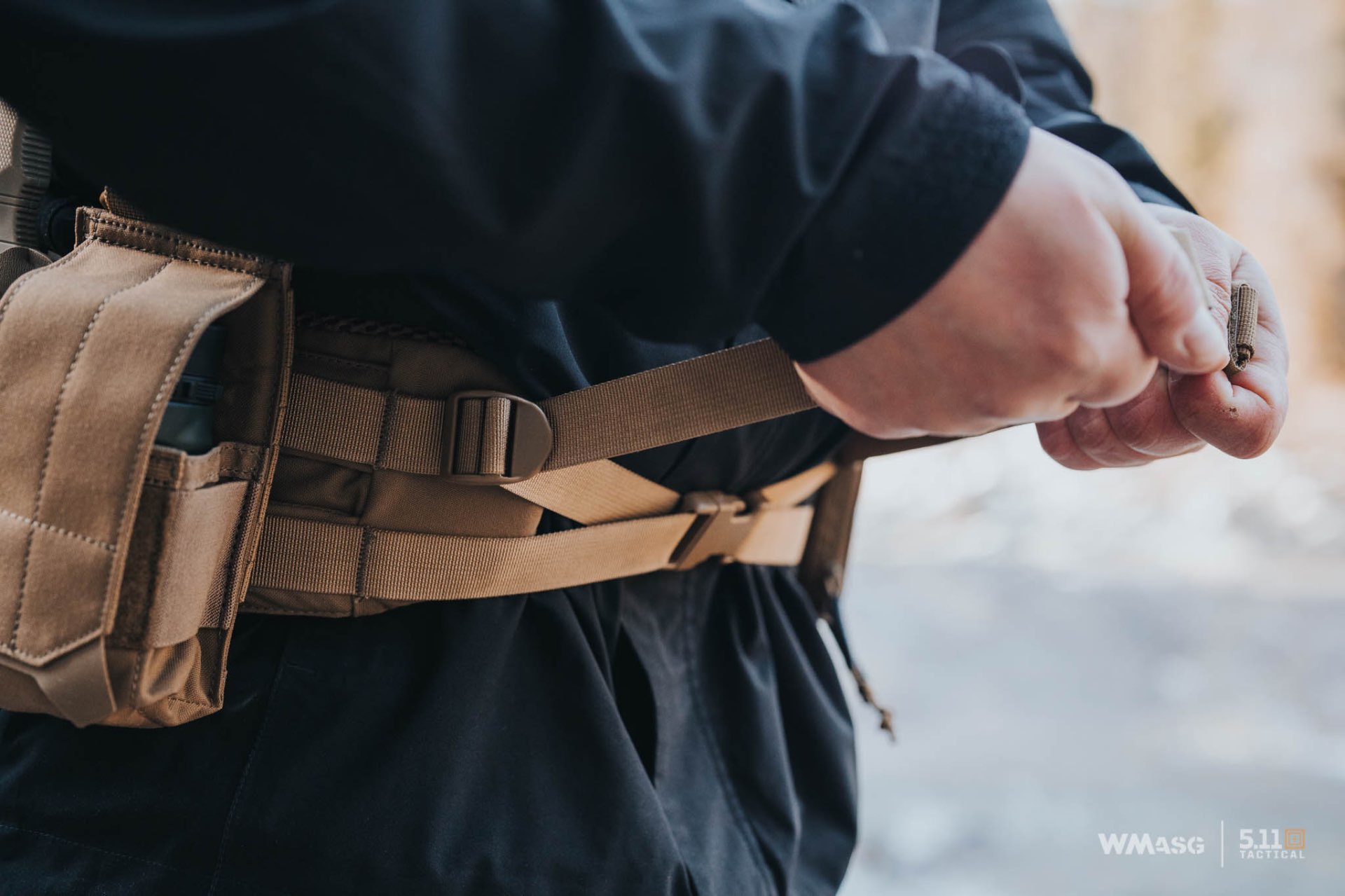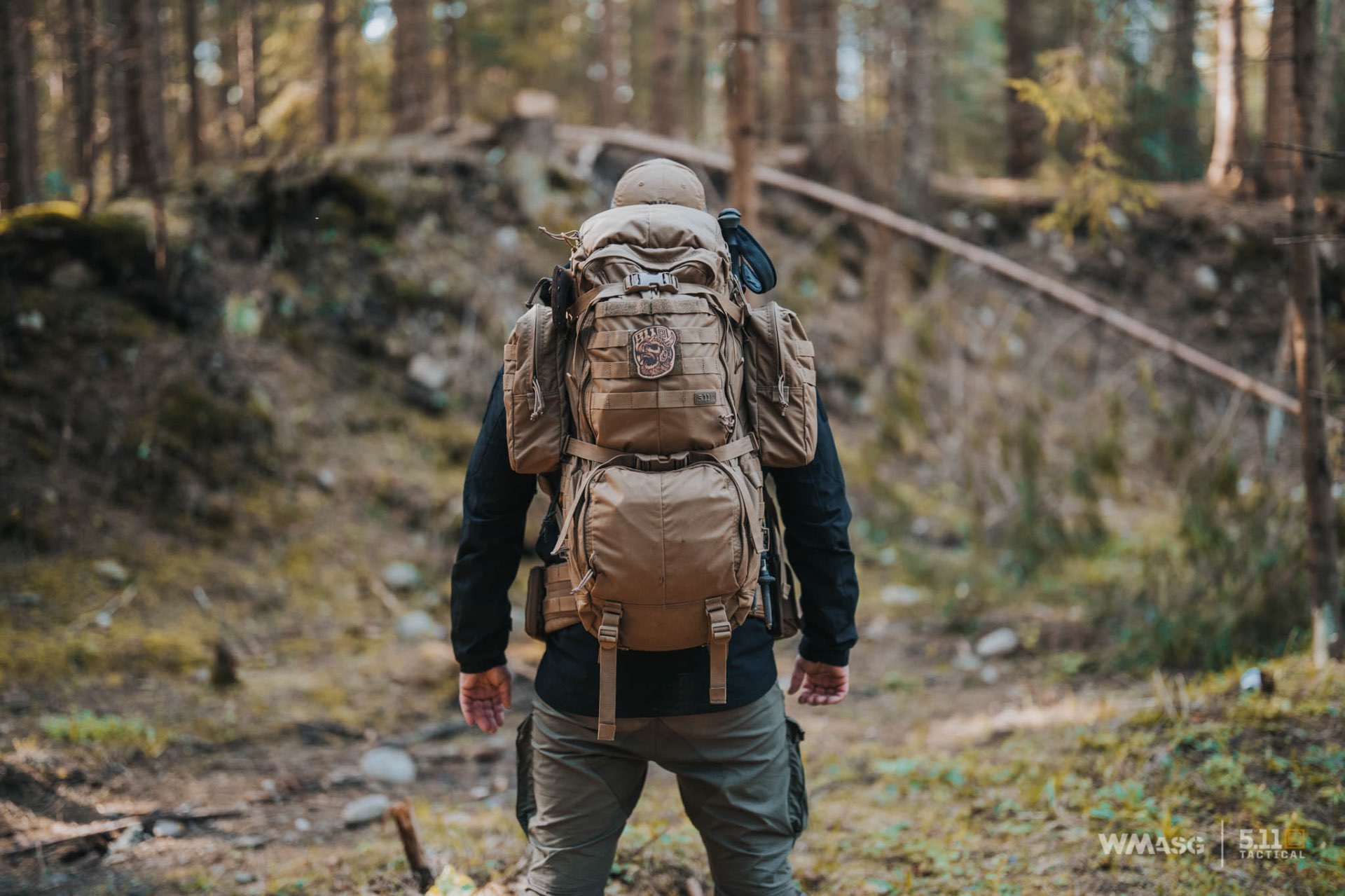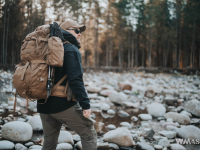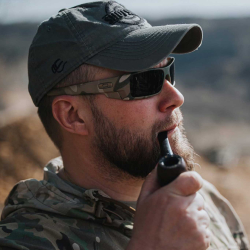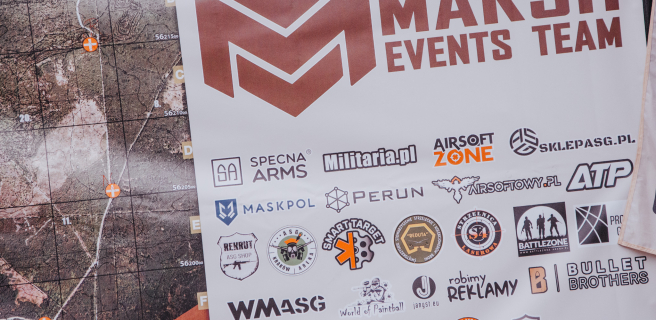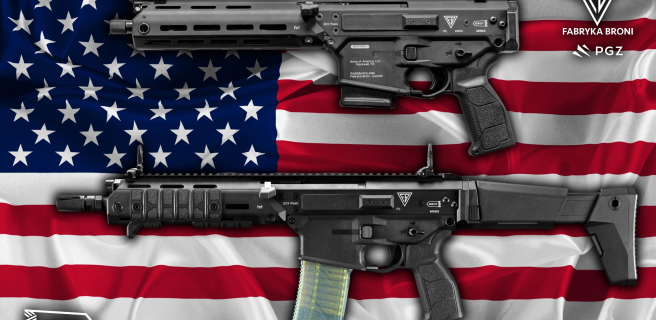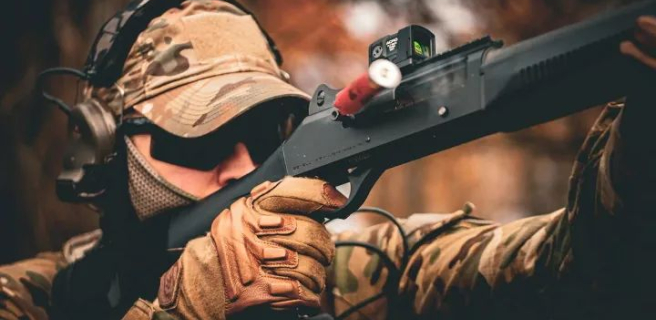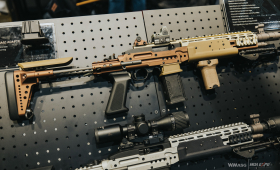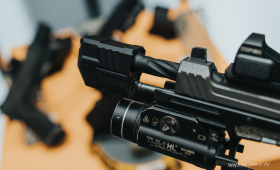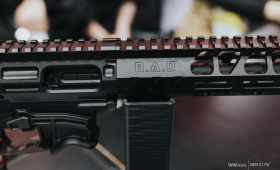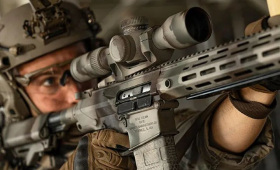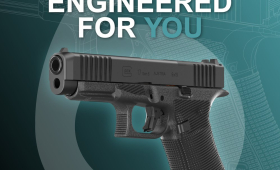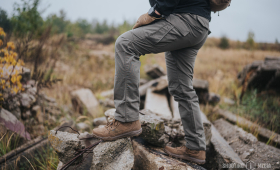This text was created as part of an commercial cooperation with 5.11 Tactical. As always, we have made every effort to ensure that the following article provides reliable information. It presents the author's opinion and does not close further discussion, to which we invite you in the comments.
The RUSH 100 backpack was first presented at the SHOT Show 2020 and caught the eyes of the audience immediately. First of all, it is much lighter than it looks, especially for a tactical backpack and despite having the largest, so far, capacity among the other backpacks of this manufacturer - 60 liters. What's more, its design also differs significantly from the one adopted thus far, around which the 5.11 Tactical RUSH series backpacks have revolved. However, there are similarities, which will be discussed later in this article.
So far, I have been a satisfied, long-time user of the iconic RUSH 24 model (although becoming worn out over time, it still fulfills its function) and the RUSH 72 model. All the people I have recommended the backpacks to share my opinion and still use the backpacks despite the passage of time. By the way, these models have recently received the 2.0 version. When I got the 60-liter RUSH 100 into my hands, it replaced the RUSH 72 model and became a faithful companion of most of my mountain adventures.
(photo: Paweł Cięcielowski, WMASG)
The RUSH 100 backpack — design
The RUSH 100 is a backpack with a more classic shape, characteristic of travel backpacks. The same applies to the carrying system, which is designed for heavy loads. However, the design of the backpack allows for all the stored gear to be well organized. There are four compartments inside the backpack. The lower and the main one, although being permanently separated by a wall (contrary to descriptions at some stores), partly share a common space. This means that if we pack more equipment into the main compartment, there will be less space in the lower one and vice versa. Similarly, although to a lesser extent, the capacity inside the backpack is flexibly shared between all chambers.
The lower compartment occupies about 1/3 of the backpack, with a part of it being shared with the main compartment. In my case, it is used to carry a warm rain and windbreaker jacket and a rain cover for the backpack (RUSH 100 is waterproof, but a rain cover is always included in the price). (photo: Paweł Ciecielowski, WMASG)
(photo: Paweł Cięcielowski, WMASG)
The compartment at the front of the backpack has been designed in an interesting way. It is long and spacious and opens in the shape of the letter U. It allows to conveniently organize most of the equipment needed outdoors. In addition to an organizer with three sections, in the lower part of the pocket there is a narrow mesh inner pocket with a zipper for storing small or spare accessories. The second internal flat pocket, also closed with a zipper, is placed top of the compartment. It has plenty of space and can accommodate an additional medium-sized organizer, e.g. the 5.11 Convoy Packing Cube Mike.
The spacious accessory compartment, apart from the organizer, will also accommodate a lot of other equipment. In my case, everything necessary for a comfortable preparation of a meal. (photo: Paweł Ciecielowski, WMASG)
The backpack does not have a flap as such and most readily needed items are usually carried there. The designer was aware of this and in the upper part of the backpack we have a quite spacious zippered compartment. Inside there is also an additional zippered pocket lined with fleece, e.g. for storing glasses.
The upper compartment is quite spacious and will fit the most necessary things, such as a warm cap, a balaclava, gloves, a headlamp with a supply of batteries, a flashlight, a compass, toilet paper, keys and glasses in a separate pocket. (photo: Paweł Ciecielowski, WMASG)
Access to the main compartment is provided via a U-shaped zipper along its entire length, i.e. 2/3 of the entire backpack. Following the example of other backpacks from the RUSH series, there is a sleeve for a hydration system bladder at the back. For its stabilization, a vertical strap supporting the bladder is provided and the tube is led outside through the central hole in the upper back part, at the level of the neck. In the main compartment there is also separate space for a custom aluminum and fiberglass frame which, according to the conversation with the designer, can also be used as an emergency paddle... The profiled frame, combined with the rest of the carrying system, ensures a very anatomical fit to the shape of the back.
Top access to the main compartment is available without undoing the straps. (photo: Paweł Ciecielowski, WMASG)
After unfastening the upper strap, we have full access to the main compartment along 2/3 length the backpack. (photo: Paweł Ciecielowski, WMASG)
When we do not use a hydration bladder, the sleeve on the back can be used as an additional space to organize equipment. (photo: Paweł Ciecielowski, WMASG)
As befits a tactical backpack, the MOLLE/PALS system is available on the sides of the lower compartment and at the front of the accessory chamber. Accessories compatible with the MOLLE/PALS system can also be mounted on the waist belt and shoulder straps. There is also a tape on both sides of the upper part of the main compartment, but it has been sewn through, creating different sized loops. It seems that the backpack has MOLLE/PALS straps exactly where someone might need them, but with the level of organization offered by the RUSH 100, in my opinion, they will mostly be there just for show.
(photo: Paweł Cięcielowski, WMASG)
An interesting solution dual side pass through panels, thanks to which it is easy to carry, for example, an axe or trekking poles. However, I do wish there was something that would hold the contents of these pass through panels from the bottom, just in case. Two compression straps are indirectly responsible applying pressure panels, but their main purpose is to attach the side pockets which do not use the MOLLE/PALS. It is a well designed solution, as long as we remember to fasten the straps. If we don't, the pockets will simply hang down. With both straps fastened, we have traditional access to the contents of the backpack's the main and accessory compartment, from the top, as is standard travel backpacks. However, when we want to open the backpack in its entirety, all we need to do is to unfasten the Duraflex Mojave Autolock buckles (one or both), fastening the straps in the middle.
(photo: Paweł Cięcielowski, WMASG)
The carrying system
One of the biggest "wows" in the case of this model is the carrying system together with the load-bearing waist belt. It doesn't matter how much the backpack weighs, after putting it on, only the legs can tell that we are carrying more weight than usual. The length of the waist belt determines the size of the backpack, as it is offered in two sizes. The first test model with the inscription "Sample" that I received was in S/M (30''-36'' i.e. from 76 cm to 91 cm) size. The one I am currently using is the L/XL (35''-45'' i.e. from 89 cm to 114 cm) size, which is more suitable for me (96 cm at the waist). In both cases, the belt served its purpose, but the larger size belt distributed the weight better at the hips. It stiffened and can also be used for carrying additional equipment. The L/XL size it is really long (offers 9 MOLLE/PALS grids). The straps adjusting the length of the belt have been designed so that they are tighten it with a movement outwards from the body. This is a big pro for me and a great convenience. If necessary, the belt can be easily detached, which can be important when used in combat with the rest of the equipment. It is fastened with a panel and a flap with a Velcro, which also cast as a cushion for the backpack in the lower back region.
(photo: Paweł Cięcielowski, WMASG)
In addition to the above-mentioned lower back section panel, the carrying system consists of shoulder straps that are a single piece with comfort pads and run all the way to the bottom of the back. In all modules of the carrying system, a thick spacer mesh is used, which ensures a very high level of comfort and ventilation while wearing the backpack. The straps are attached, depending on the selected configuration, with up to three straps and additionally stabilized by a large Velcro panel. The carrying system is adjusted by moving the shoulder straps with the Velcro-stabilized panels vertically. At the top, like in all good mountaineering backpacks, we have load lifters that tighten the backpack to the back and additionally stabilize the it necessary while walking. Depending on the configuration and size of the user, there are buckles at two heights. Fans of the RUSH series will surely recognize the design of the harness from the outside. Straps with MOLLE/PALS grids, the chest strap and harness length adjustment, as well as buckles that allow to quickly release the backpack, are the same as in other models of the iconic RUSH series. If necessary, the backpack can be quickly released by undoing the buckles on the shoulder straps.
(Photo: Paweł Cięcielowski, WMASG)
It is worth paying attention to the grab handle located in the upper part of the back. Its design is not complicated, but thanks to its size, the backpack can be held and lifted very comfortably and thus it is easier to put on when full loaded.
(Photo: Paweł Cięcielowski, WMASG)
The design of the side pouches resembles the half-zipped accessory pouches known from the 5.11 Tactical's offer and other ones available on the market. The measured (and therefore approximate) size of 26x10x14 cm is optimal. They will hold a GSI cup with a 1L Nalgene bottle and here will still be some space left. According to the manufacturer, the detached pockets can be used as a shoulder bag, but taking them off the backpack is not convenient. Pulling the triple, stitched layer of the strap through the Autolock mechanism of the Duraflex buckle is not easy.
(Photo: Paweł Cięcielowski, WMASG)
Additional equipment can be attached from the bottom of the backpack using the straps located there. They are adjustable but cannot be unfastened quickly. The 2.5 cm wide straps are 70 cm long, which allows to attach rather small items, such as a bed roll. The straps can be easily replaced with others if necessary. To attach a larger sleeping bag, I decided to use the RUSH Tier System by attaching it to the sides of the lower chamber. There is also a drainage hole at the bottom of the backpack, but due to the fixed partition inside, it is unlikely to be of much use in the event of an unexpected flooding in the main compartment.
(Photo: Paweł Cięcielowski, WMASG)
Impressions and opinion of the user
Cutting it short, the backpack makes a very good impression from the get go. A properly adjusted carrying system allows to forget about the weight carried on one's back. When we overdo it, only our legs will feel it, but its up to the user follow the manufacturer motto #alwaysbeready and simply to keep fit. It took me a while to get used to the organization of space in RUSH 100 and I wasn't entirely satisfied with the limited length of the straps at the bottom of the backpack and the fact that they are not unfastened, but as a person who likes having well-organized equipment (I guess as I get older looking for stuff irritates me more and more - #alwaysbeready), I will probably be reluctant to trade this backpack for another. The more so that it works well on both shorter and longer trips, i.e. while carrying less or more things. I always use it in the same way. It is worth emphasizing the use of Duraflex Mojave Autolock buckles in the straps and the "outwards form the body" belt adjustment because it increases the comfort and culture of adjusting the pressure of the straps, which is a thing that I sometimes had to tackle with.
(Photo: Paweł Cięcielowski, WMASG)
This review took longer to make than I intended, for which I should apologize to a certain group of people. I received the backpack right after its release, but later circumstances made it difficult for me to finish this text. On the other hand, this allowed me to use the backpack for a longer period of time and on numerous trips. The most important test took place during a 3-day trip to the mountains with a load of about 30 kg. Throughout the period I used it, I managed to make friends with the RUSH 100. The backpack passed the test in highly variable weather conditions, on very steep approaches, descents and long marches. The carrying system also worked well when running down a mountain path, and I even recently had to do push-ups while wearing it... It is worth noting that this is a tactical backpack, not a typical travel one, although I used and evaluated it in this capacity. It will certainly be appreciated by people who are looking for a comfortable, clever and practical companion for trips of various types, during which they do not want to worry about where and how their backpack will be dropped, just like me. The strength of the 500D and 1000D Nylon used on the bottom of the backpack is well known and provides adequate protection against abrasion and tearing. I can surely write that the RUSH 100 will be a trustworthy companion for many expeditions.
(Photo: Paweł Cięcielowski, WMASG)

